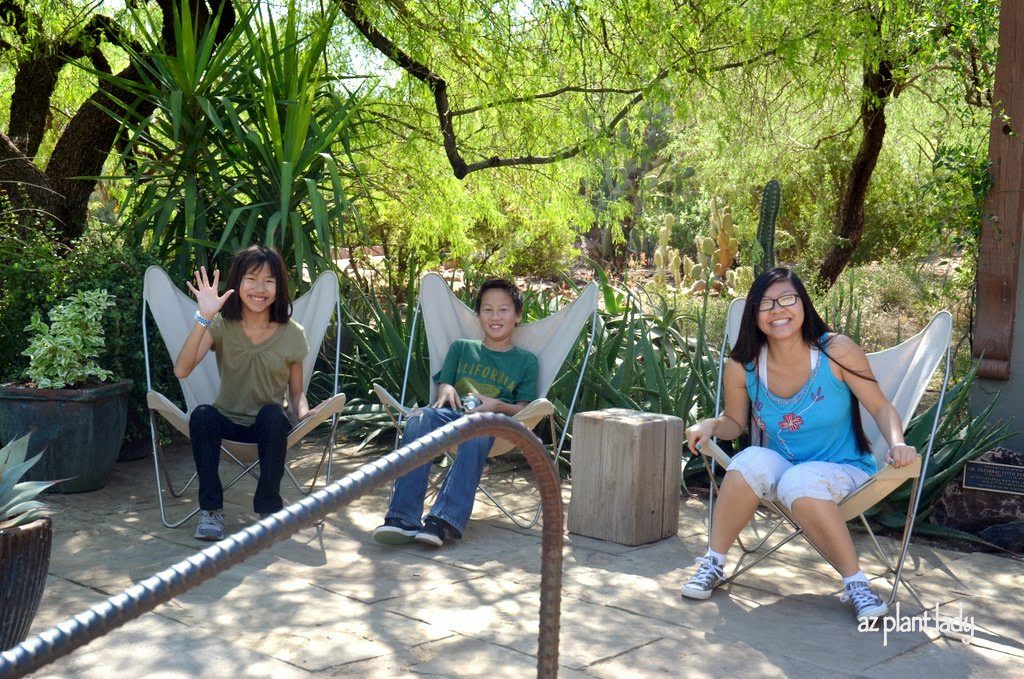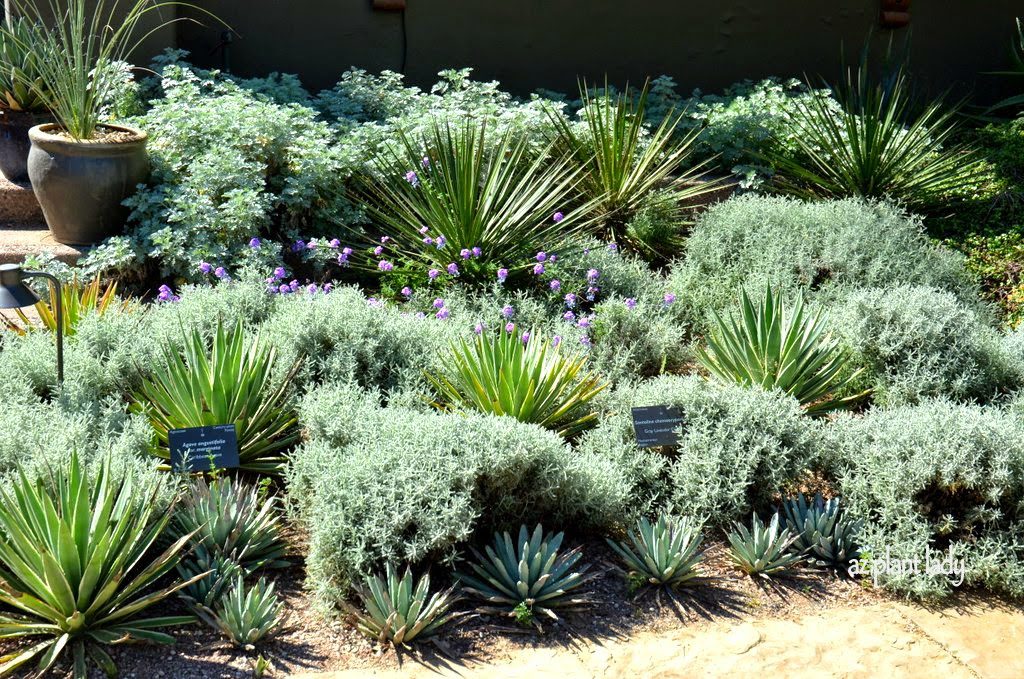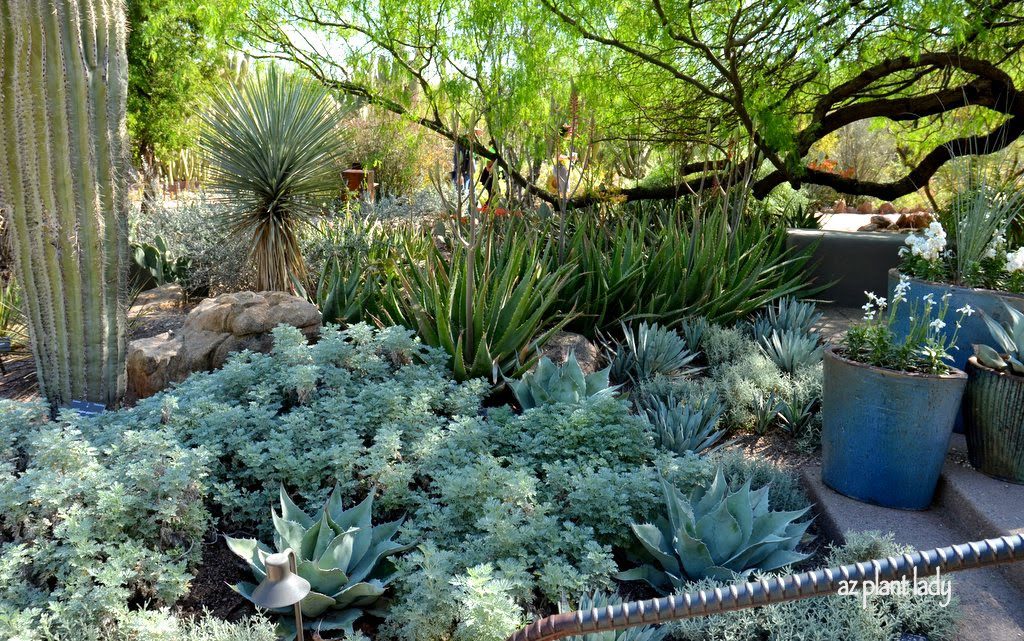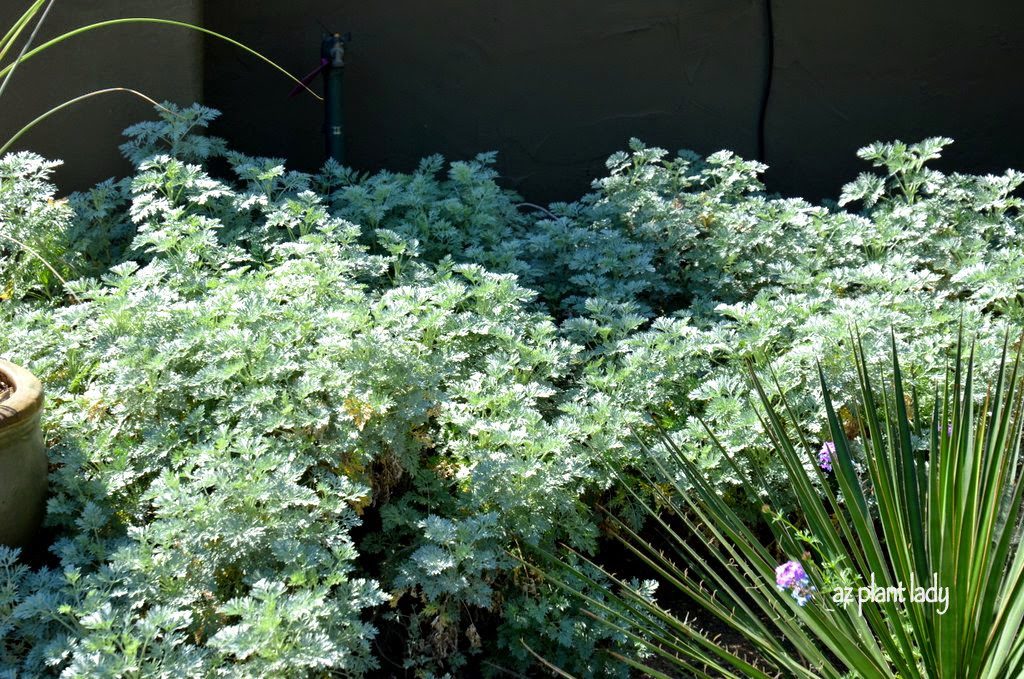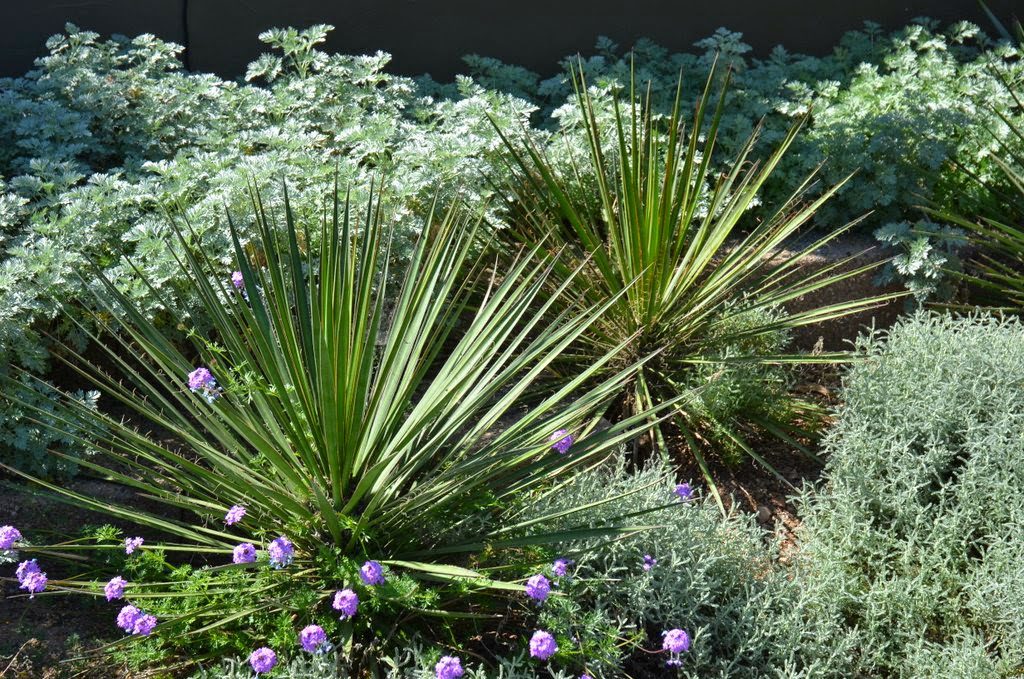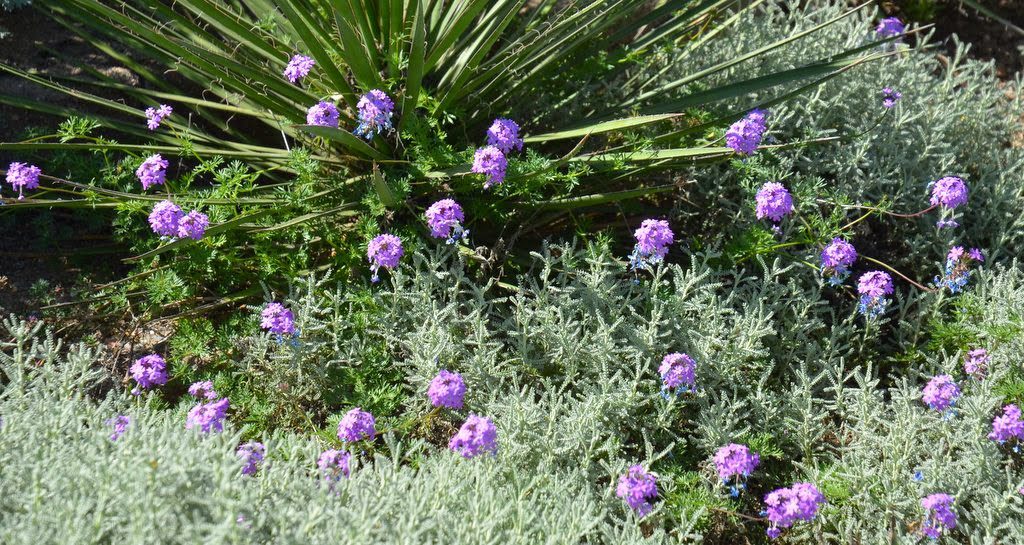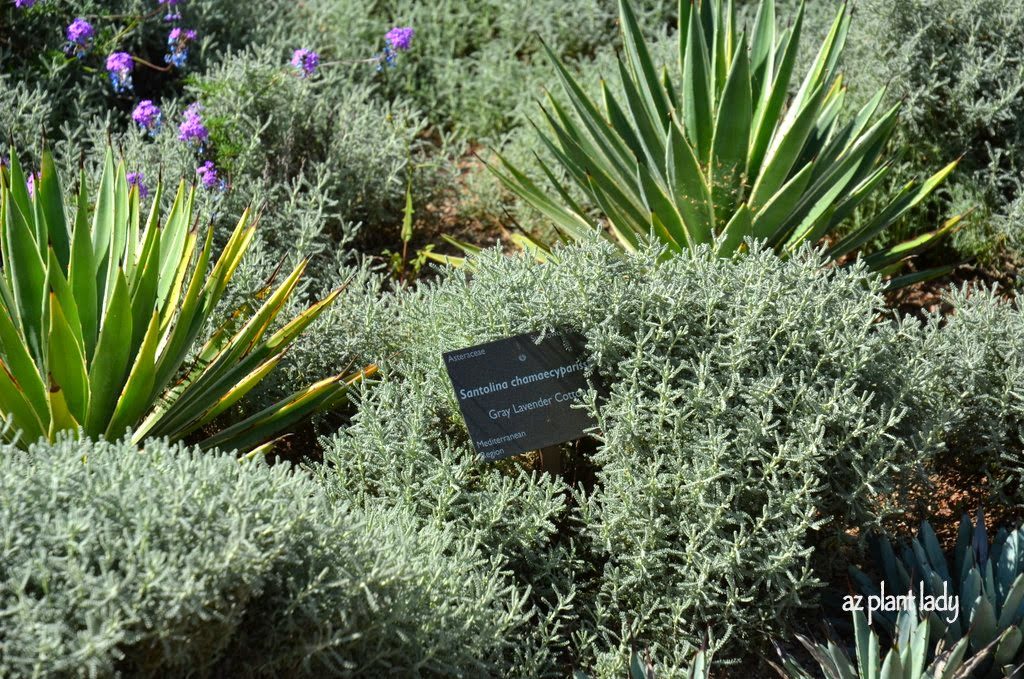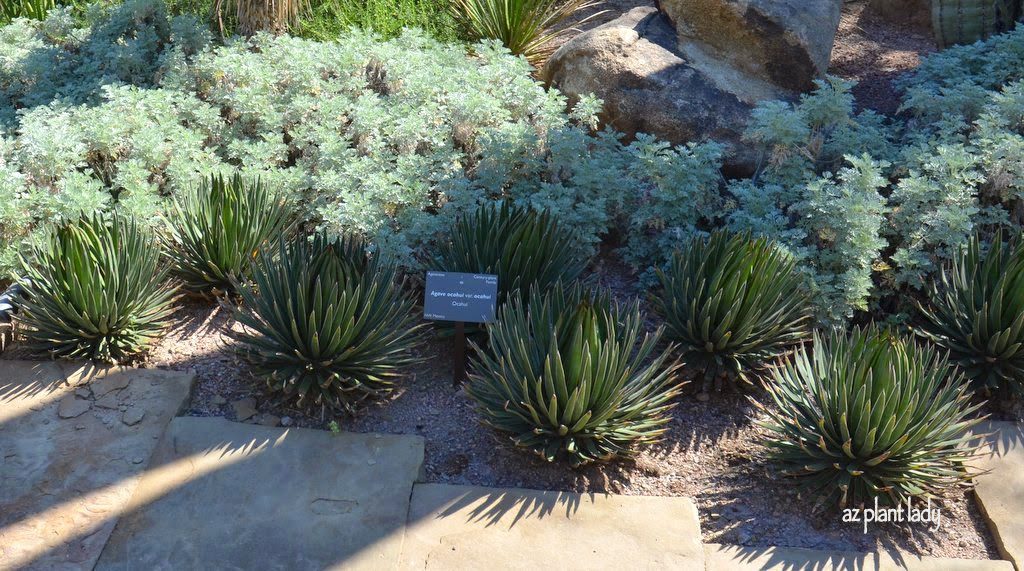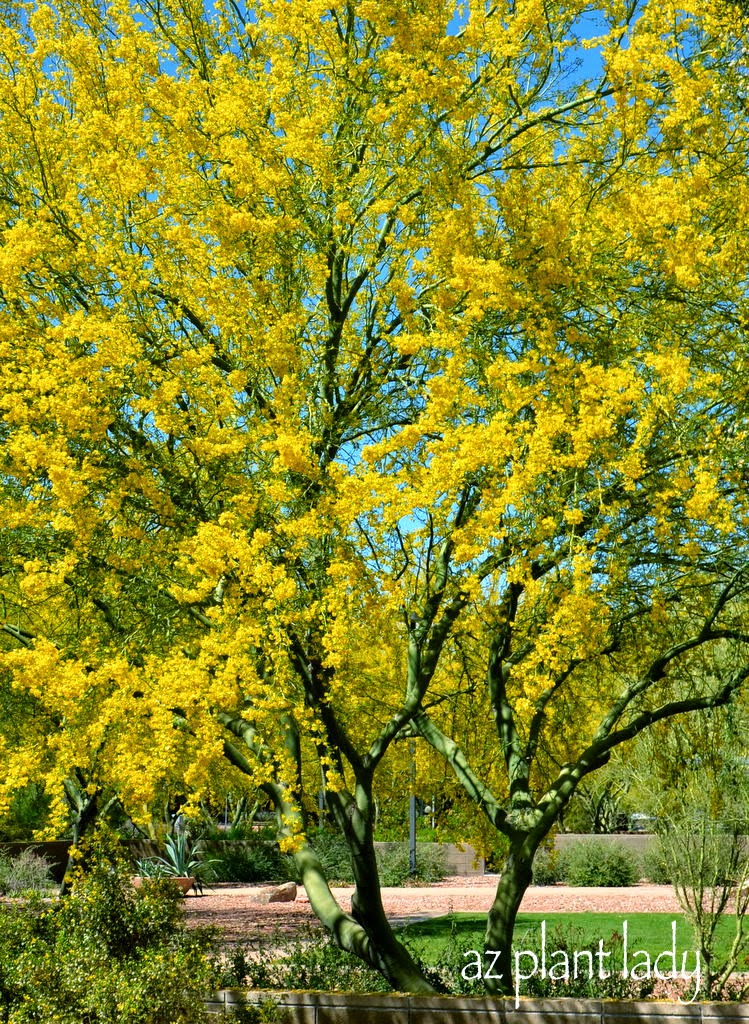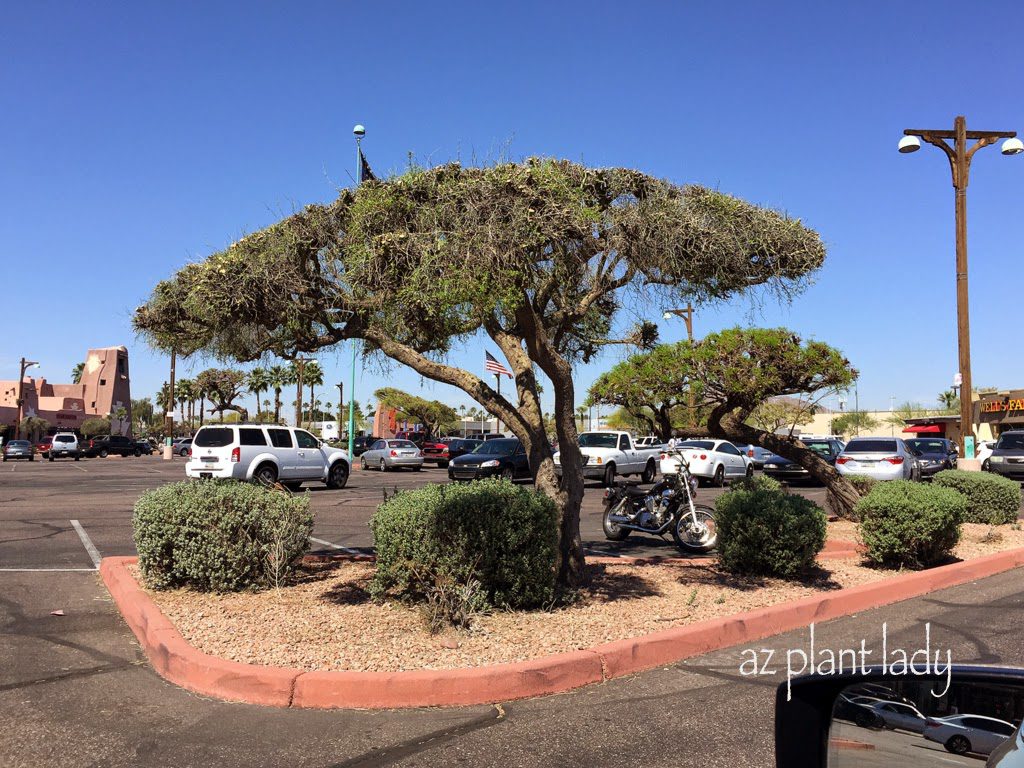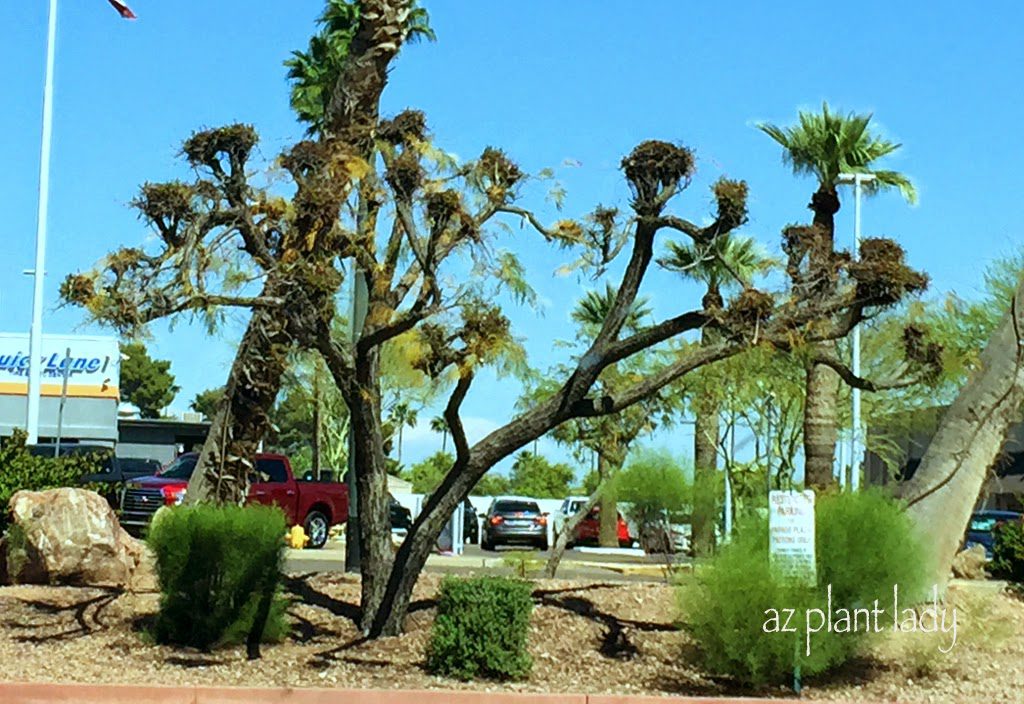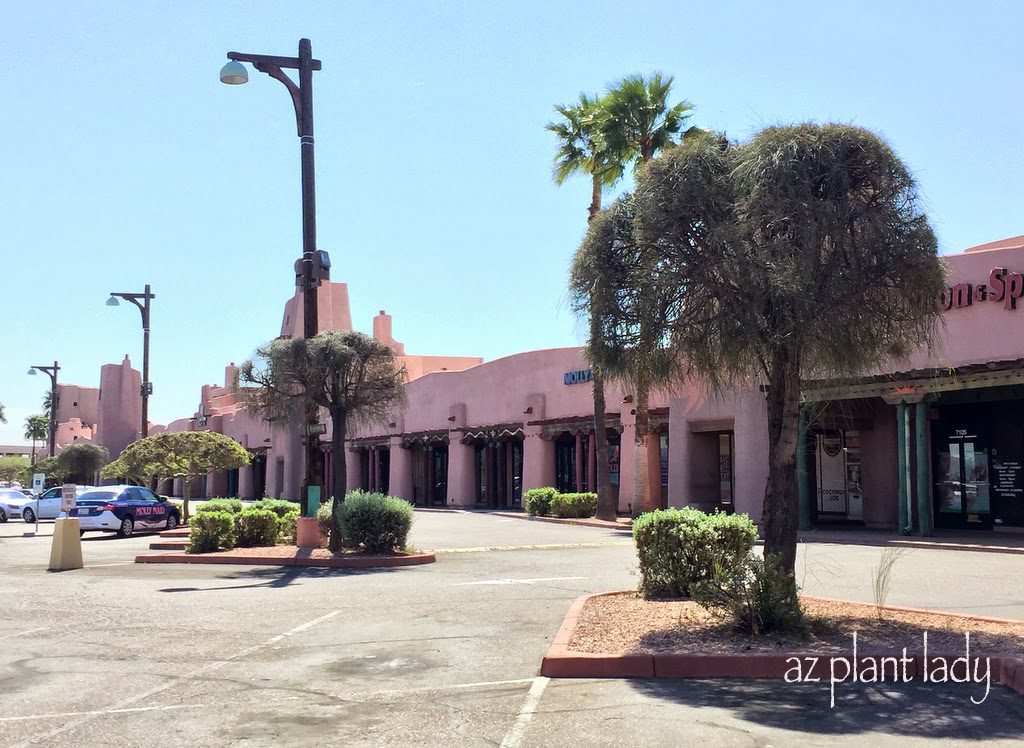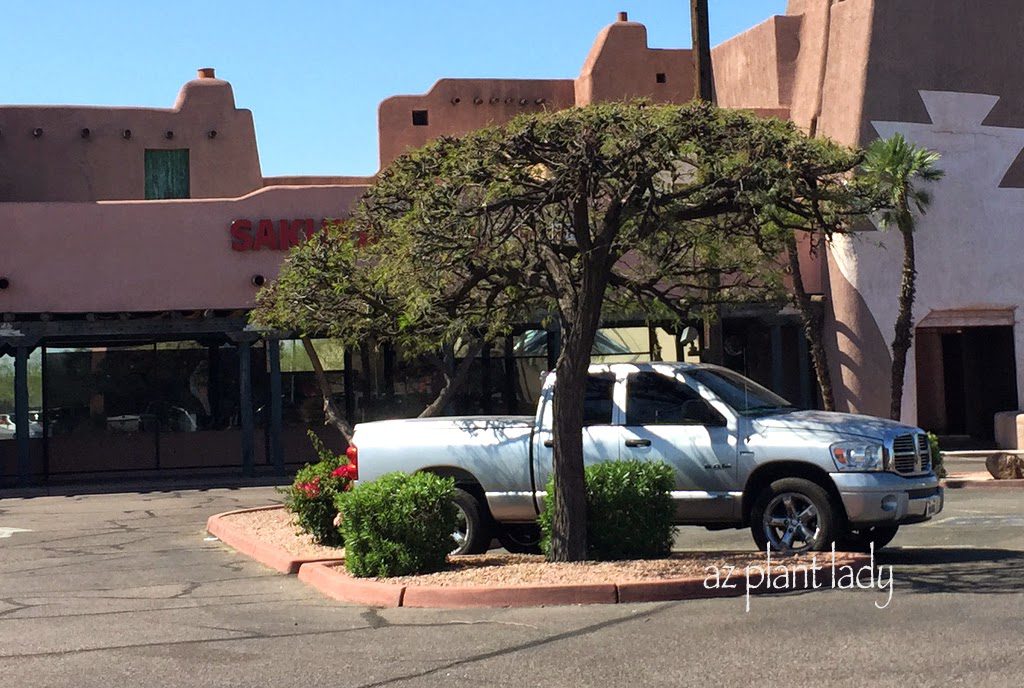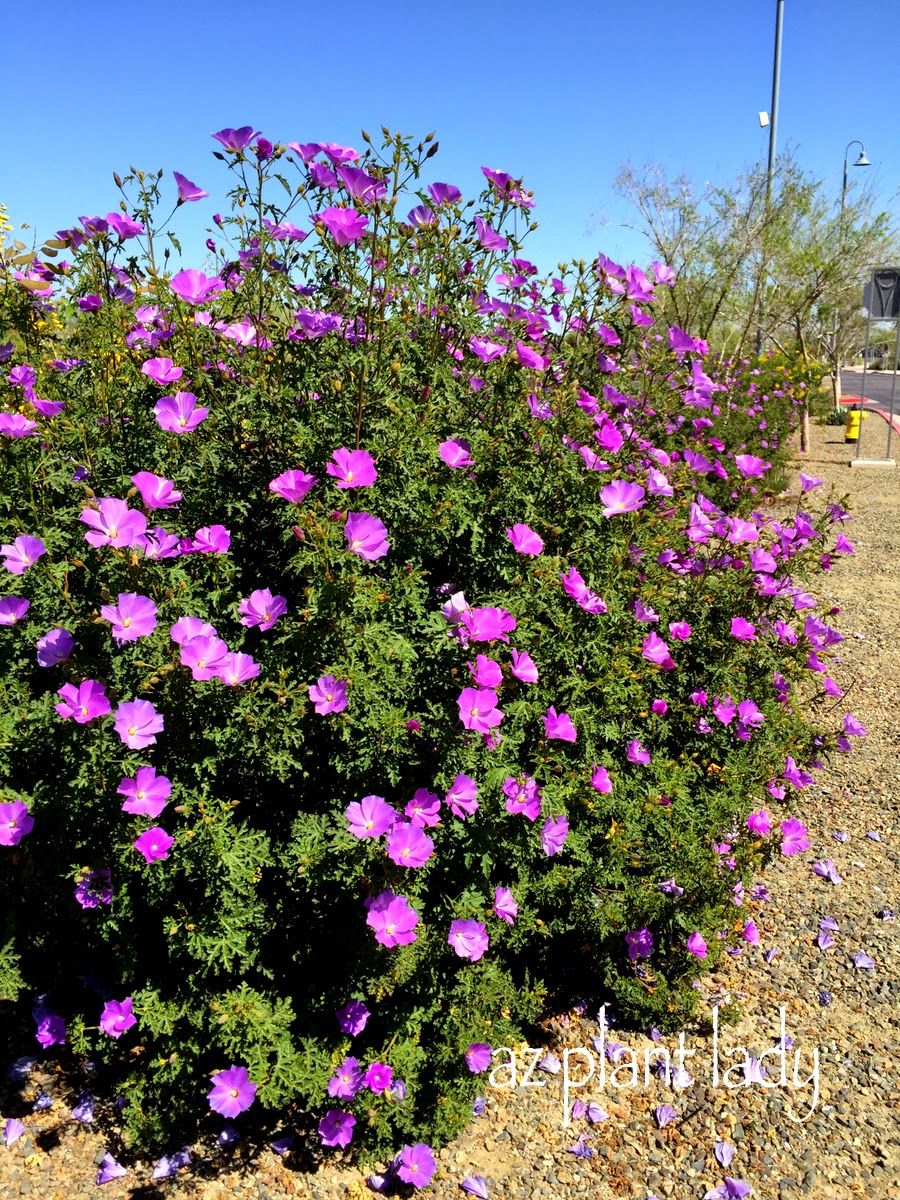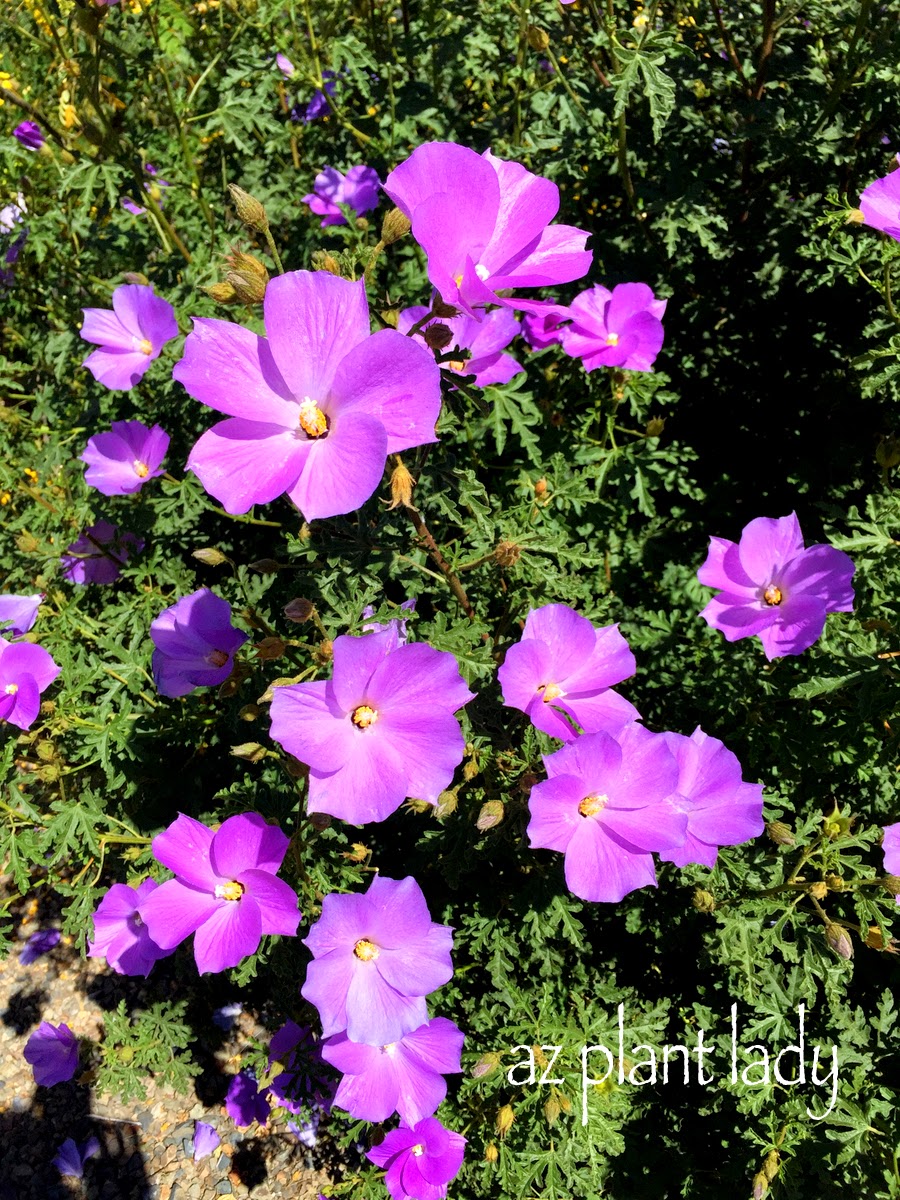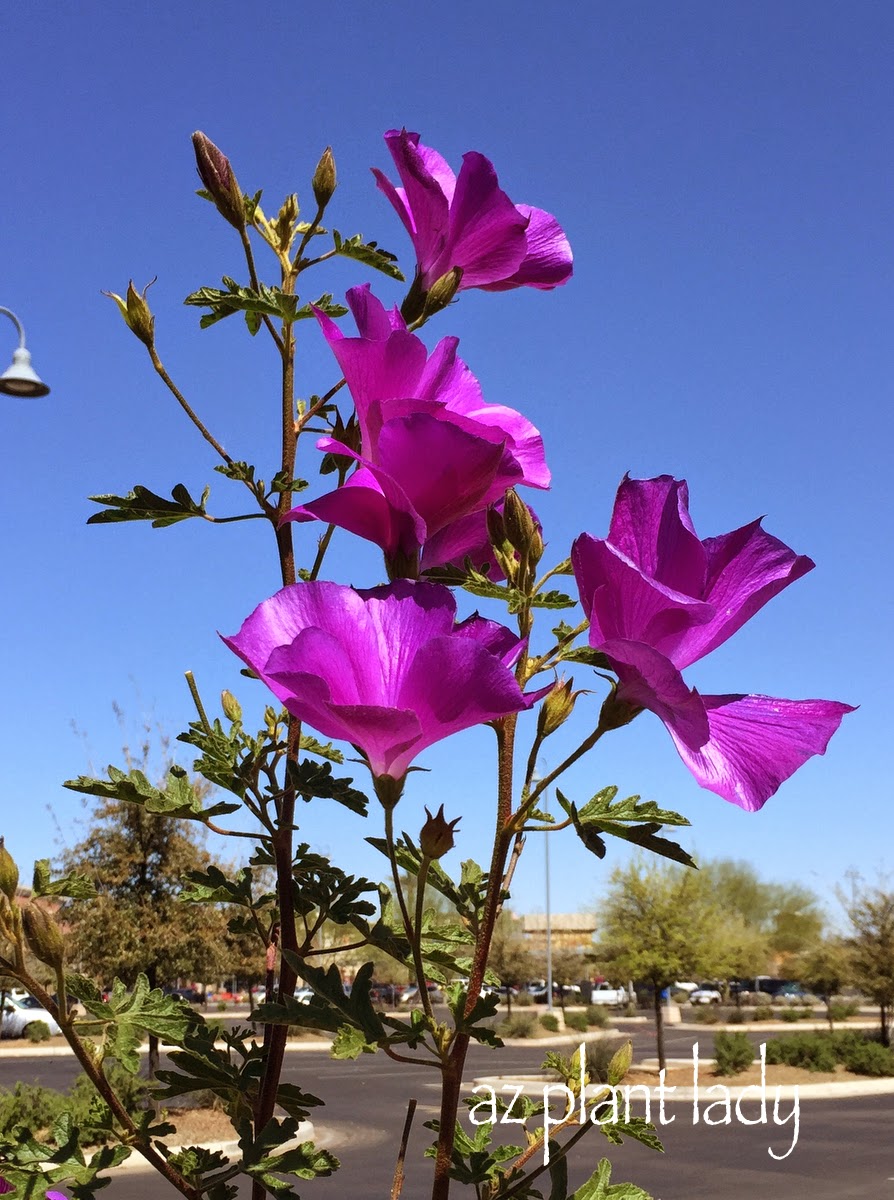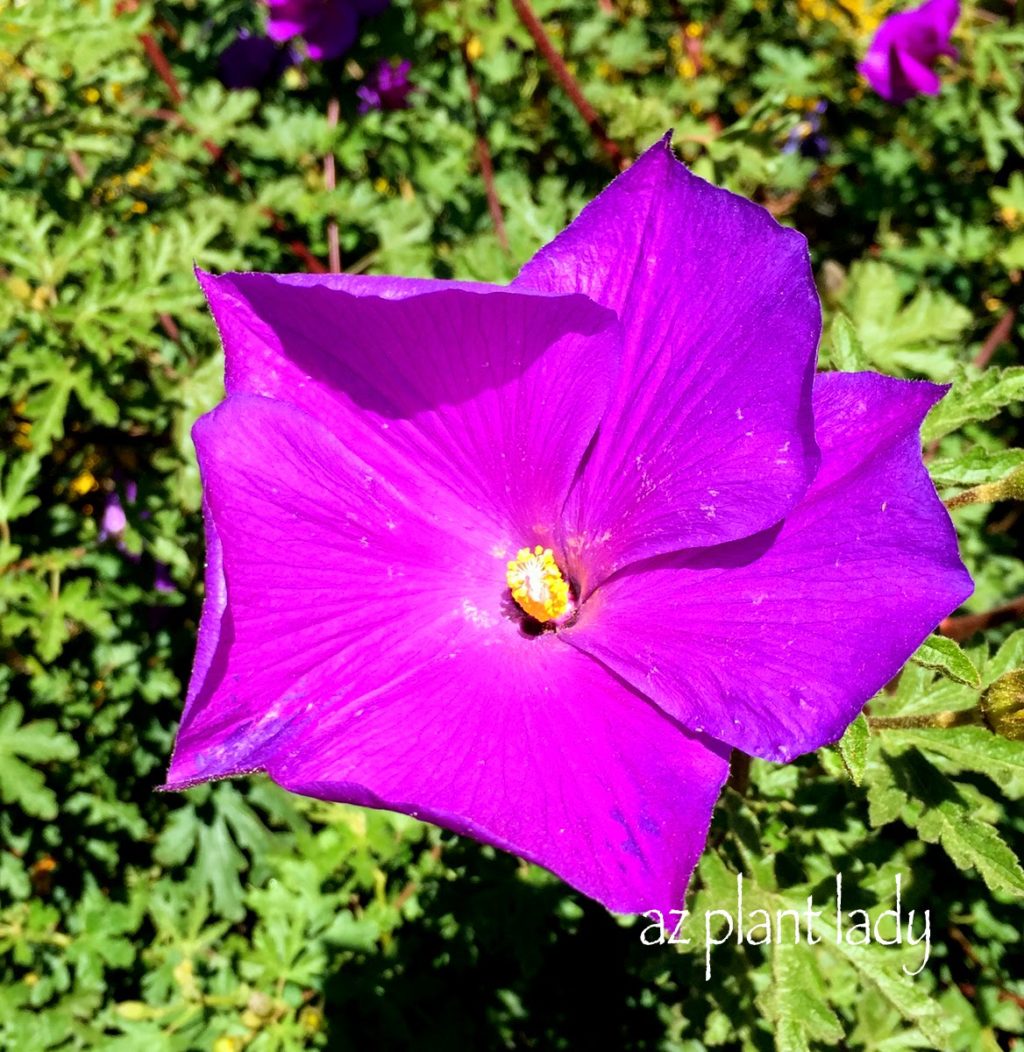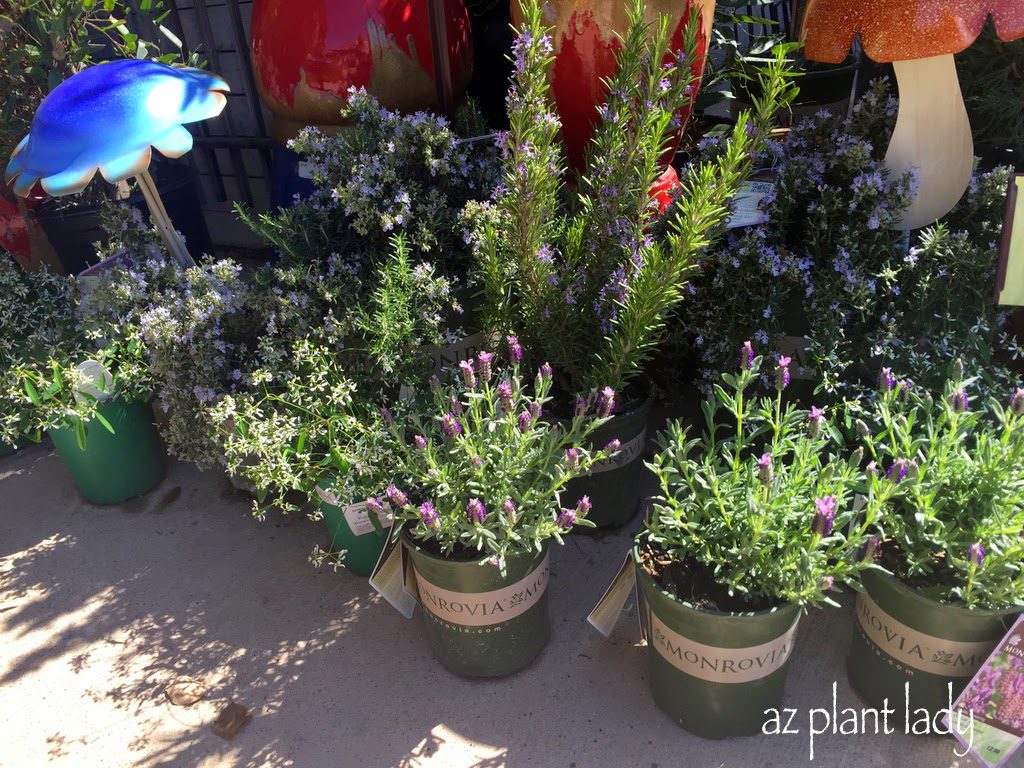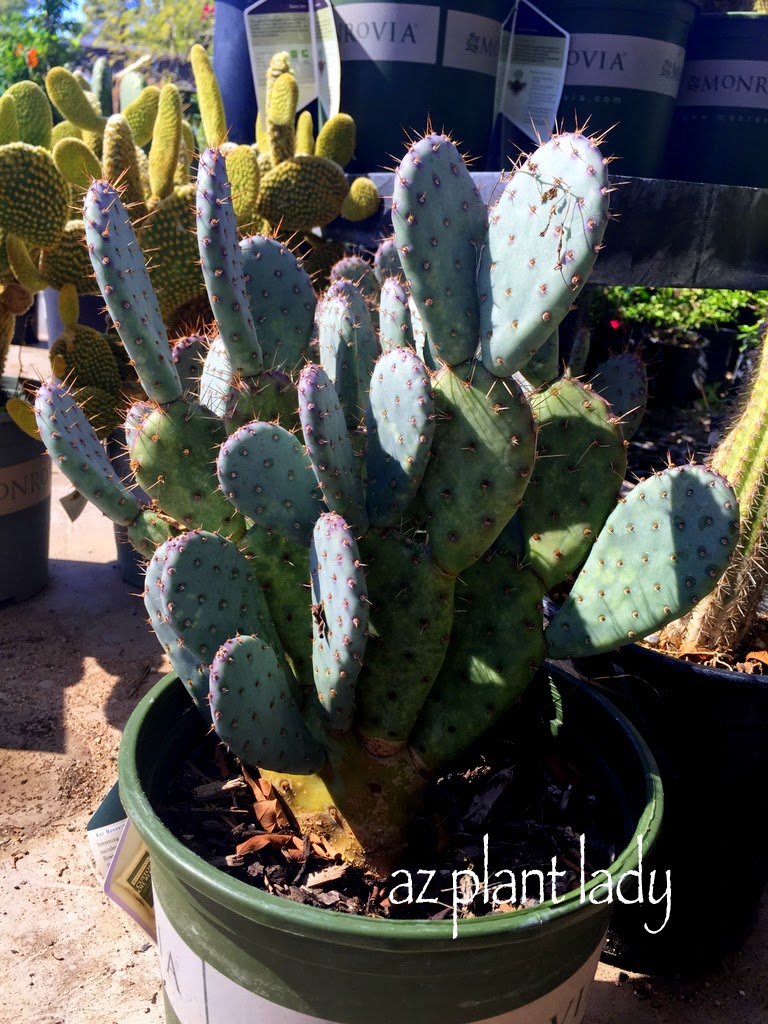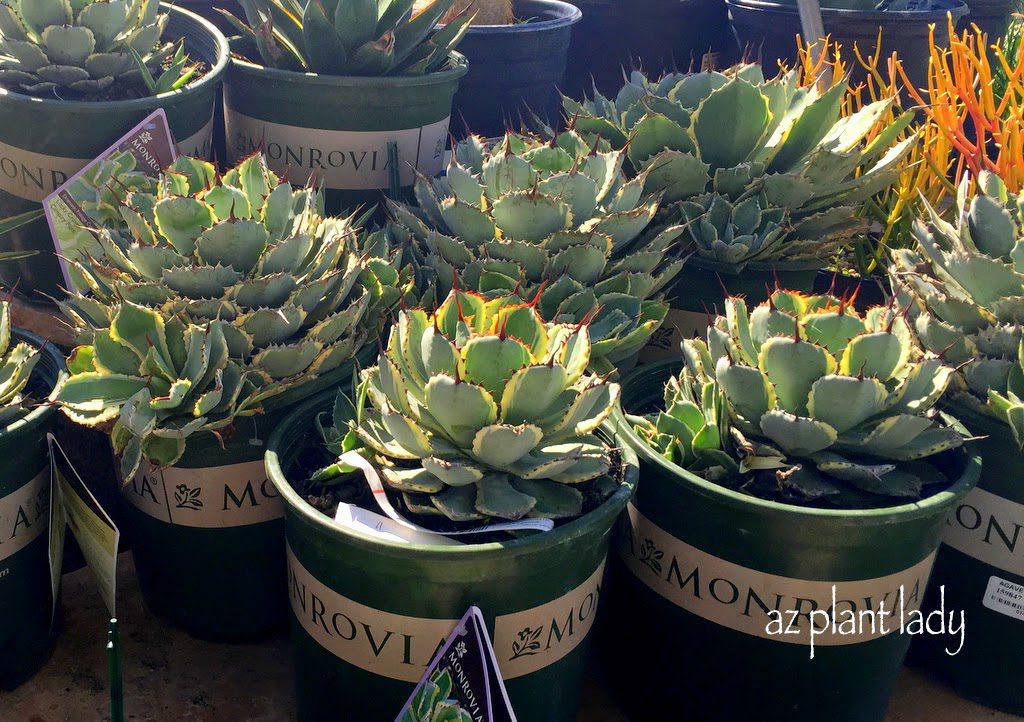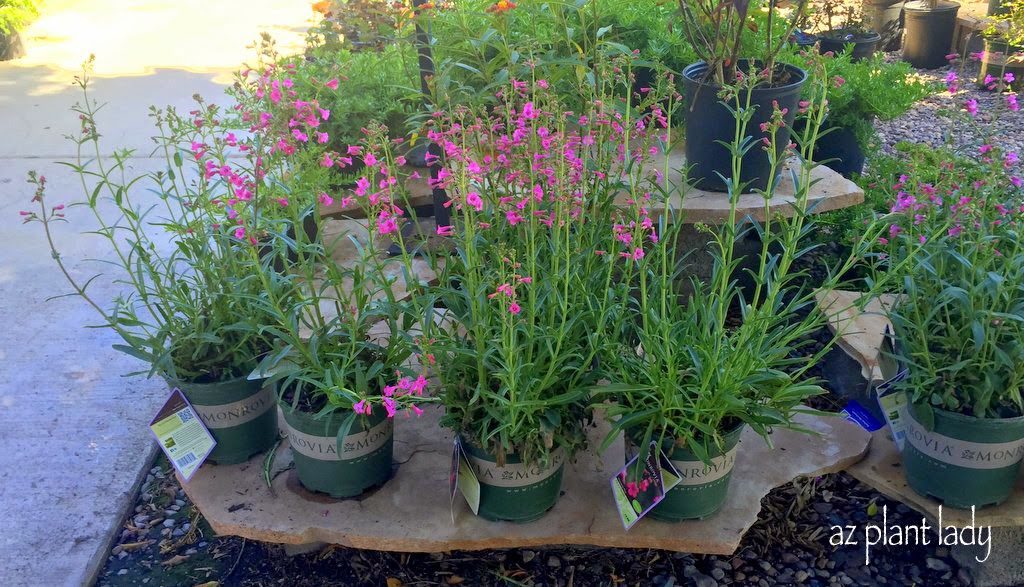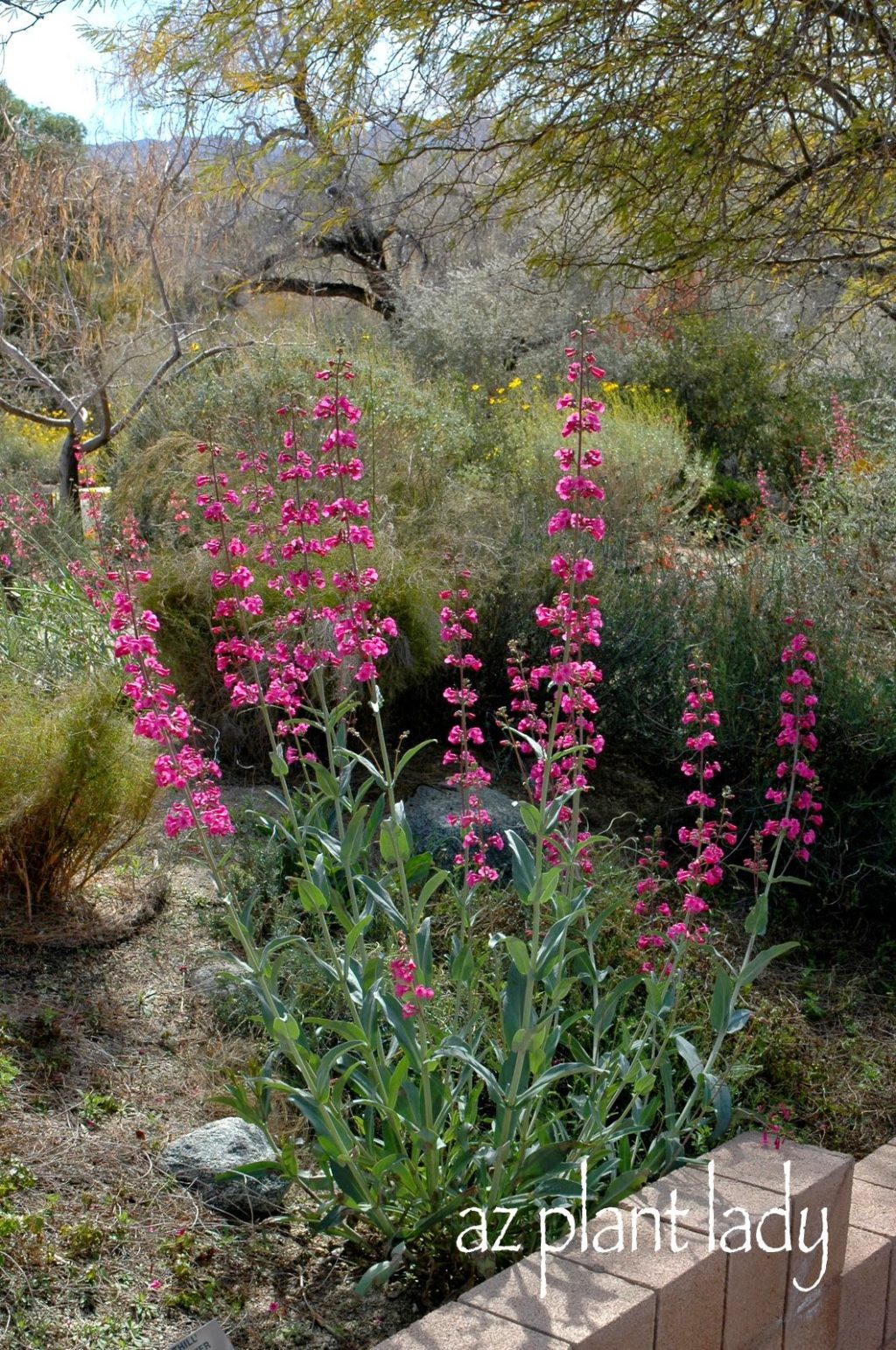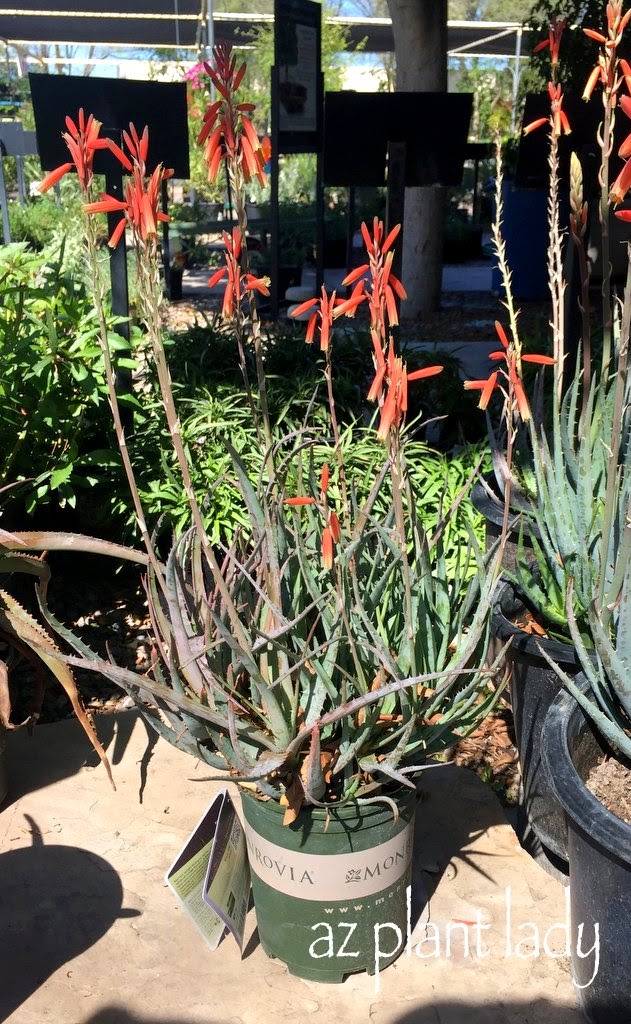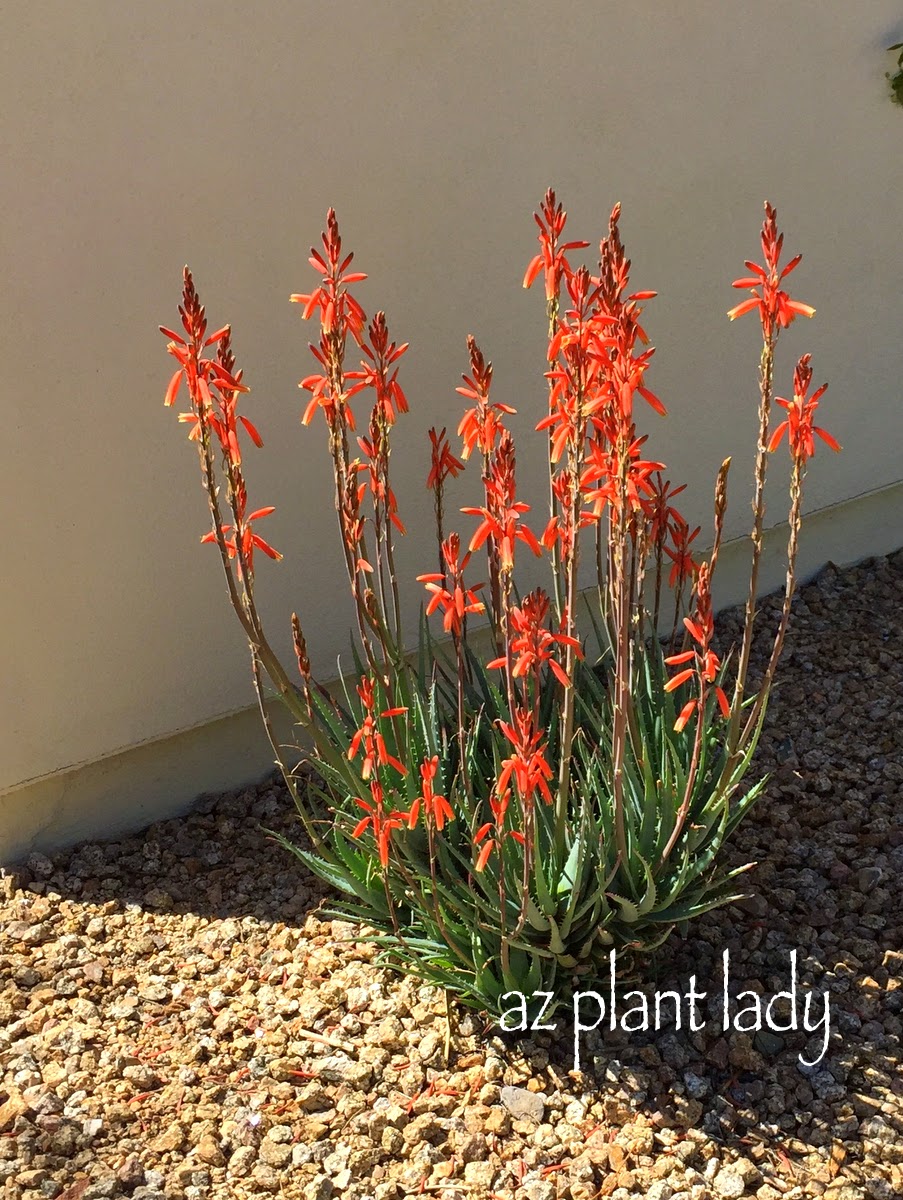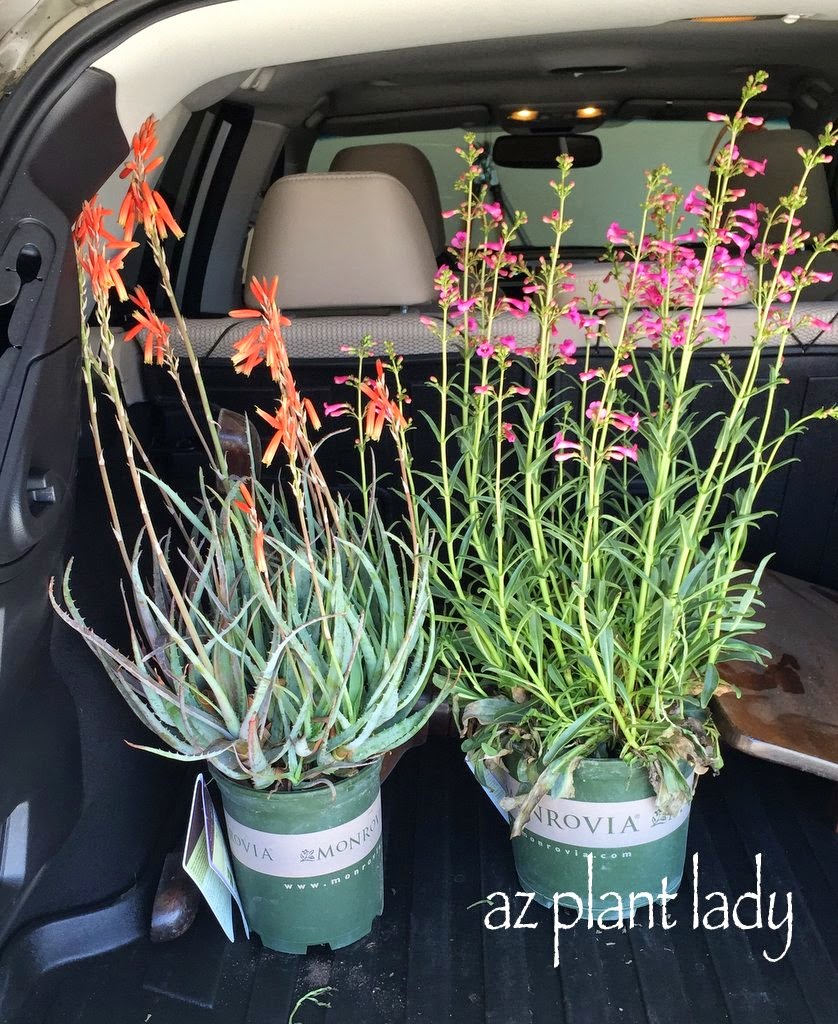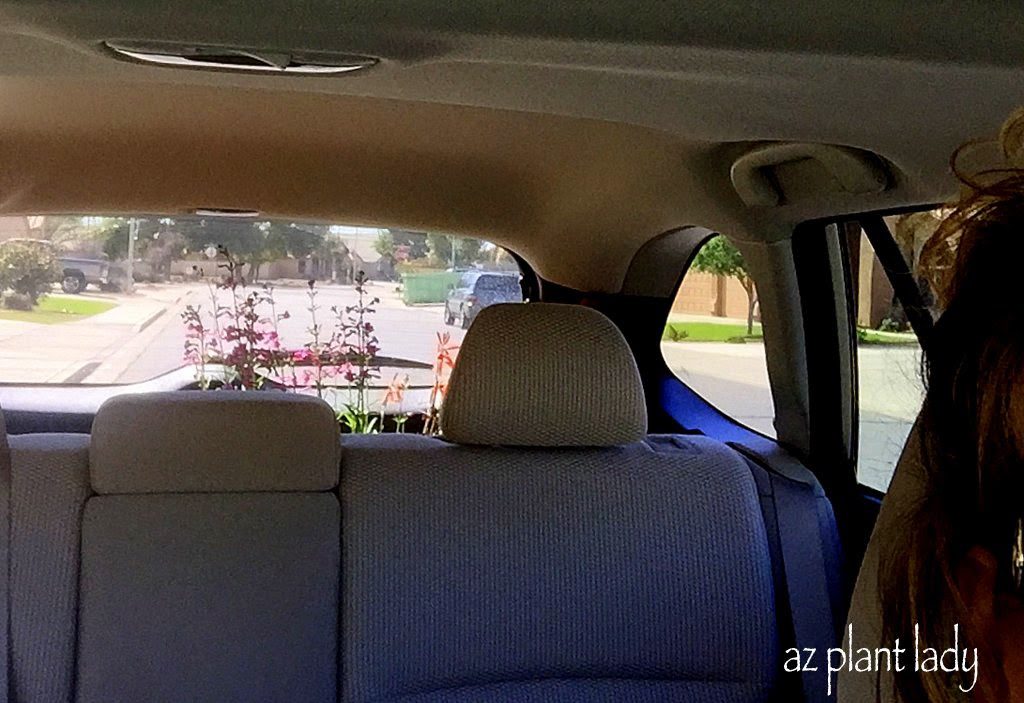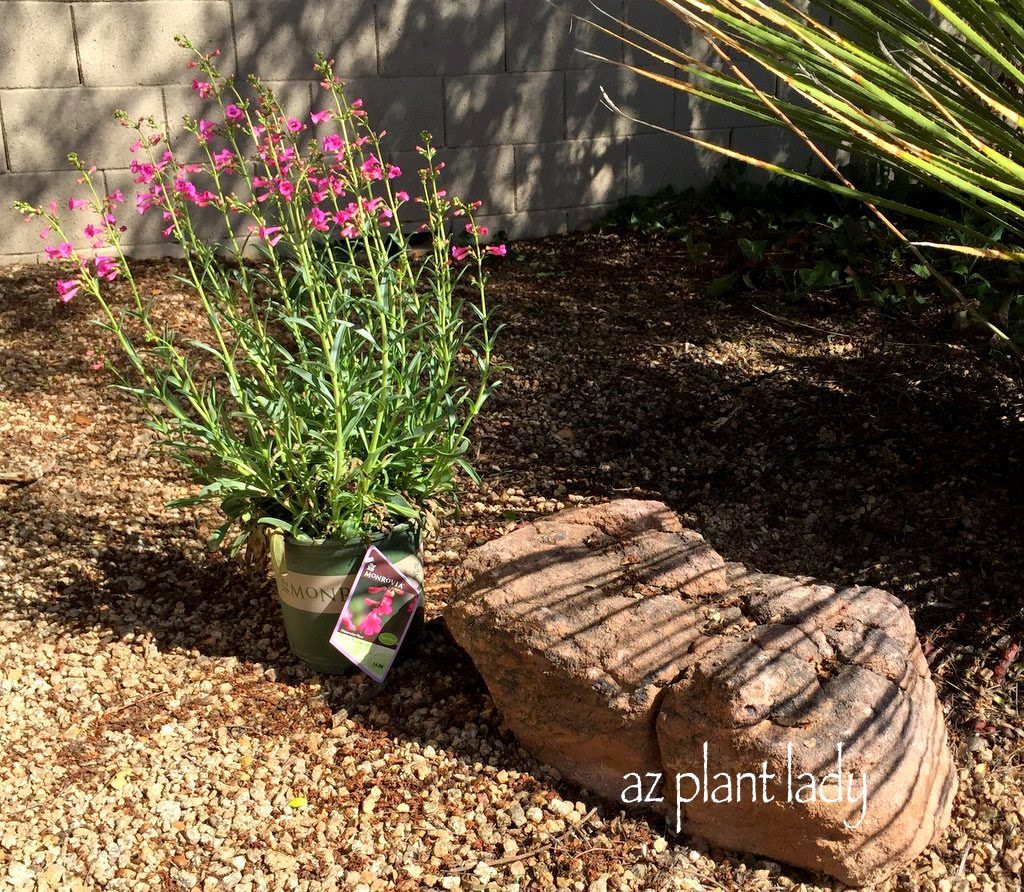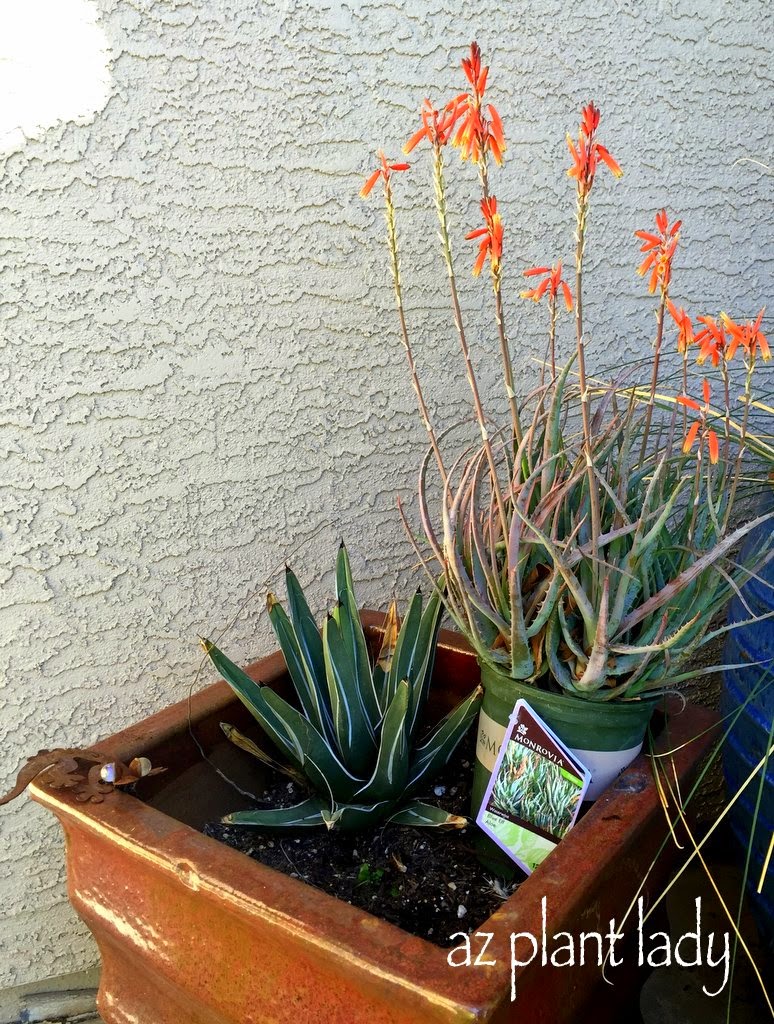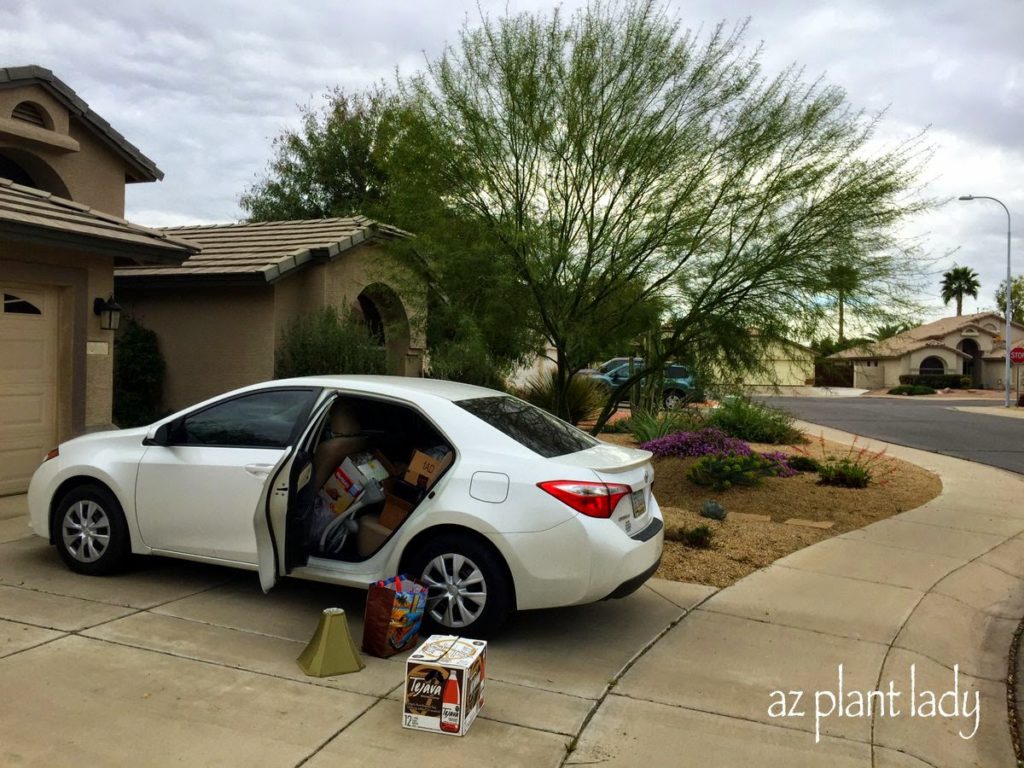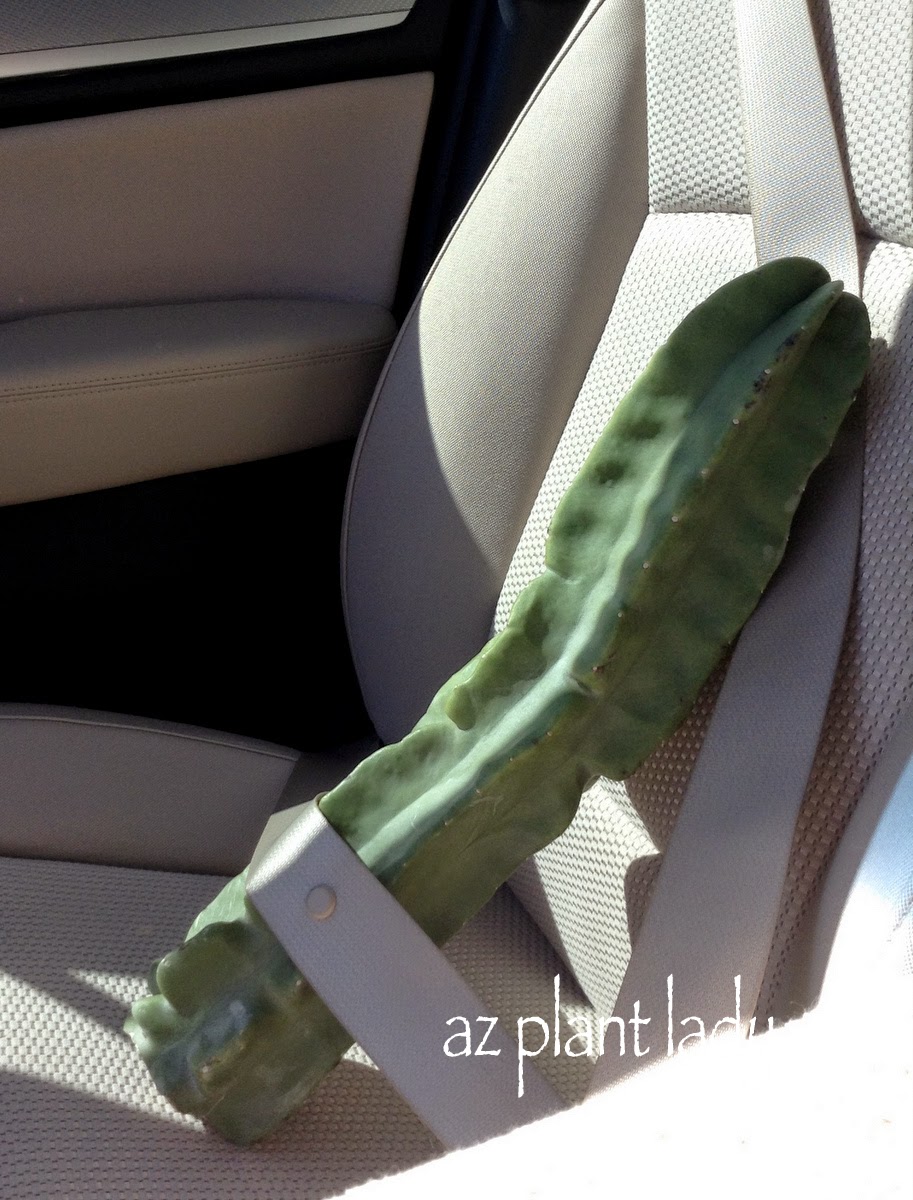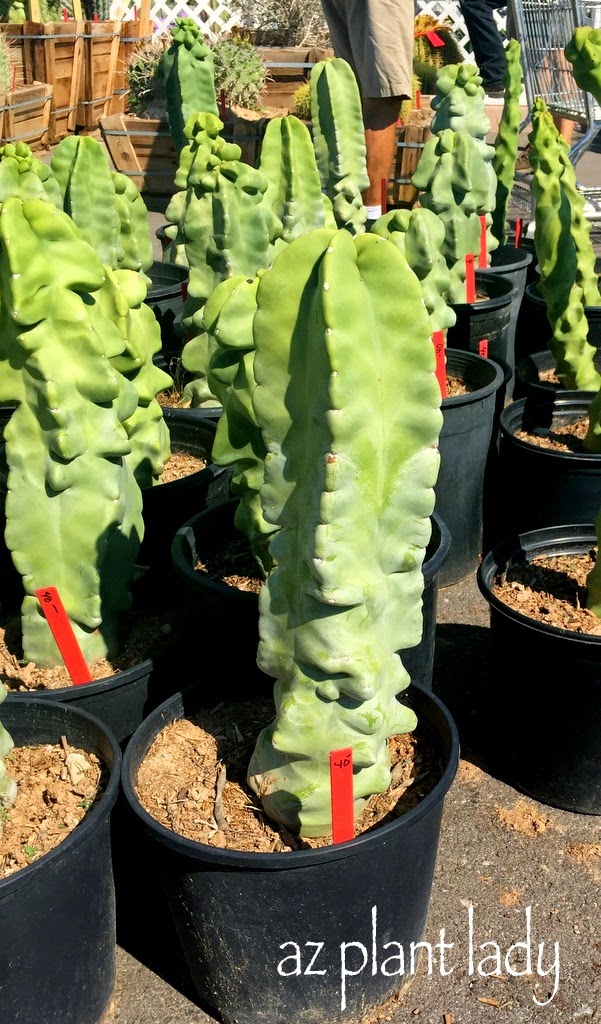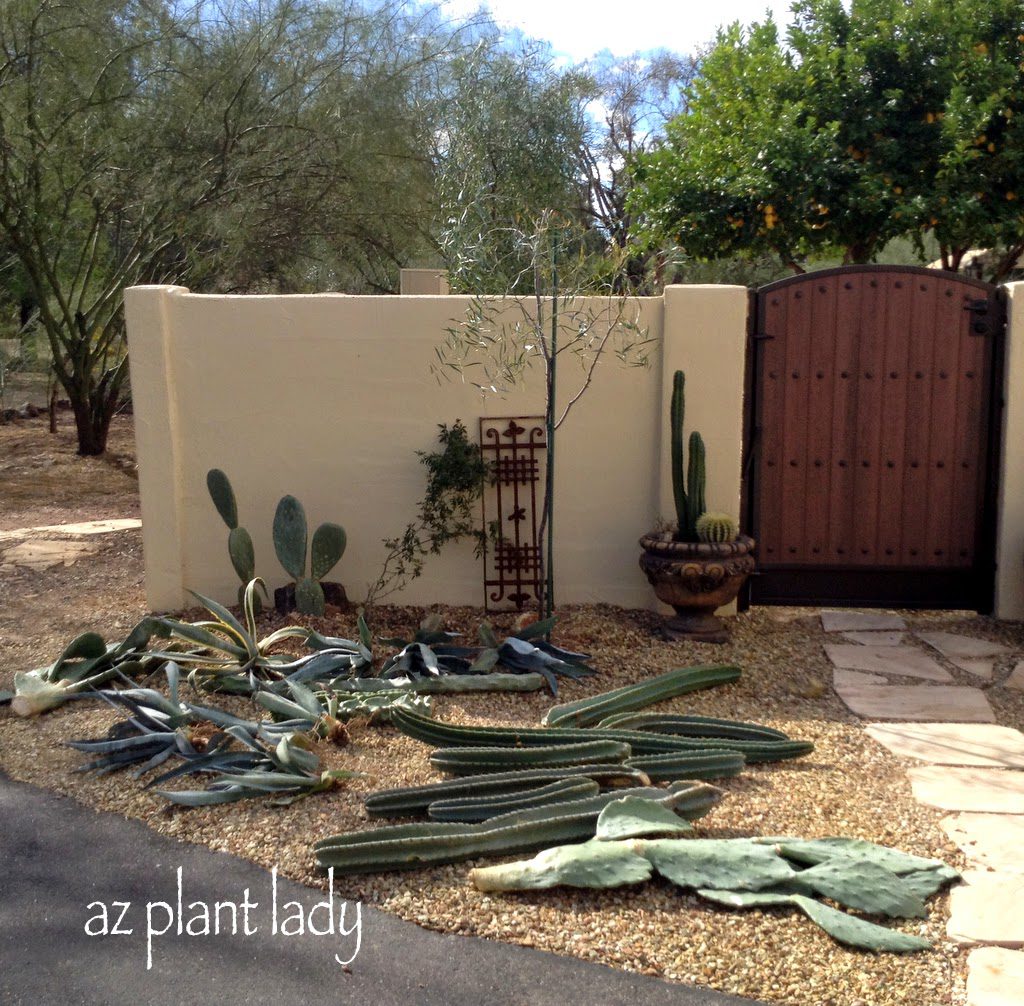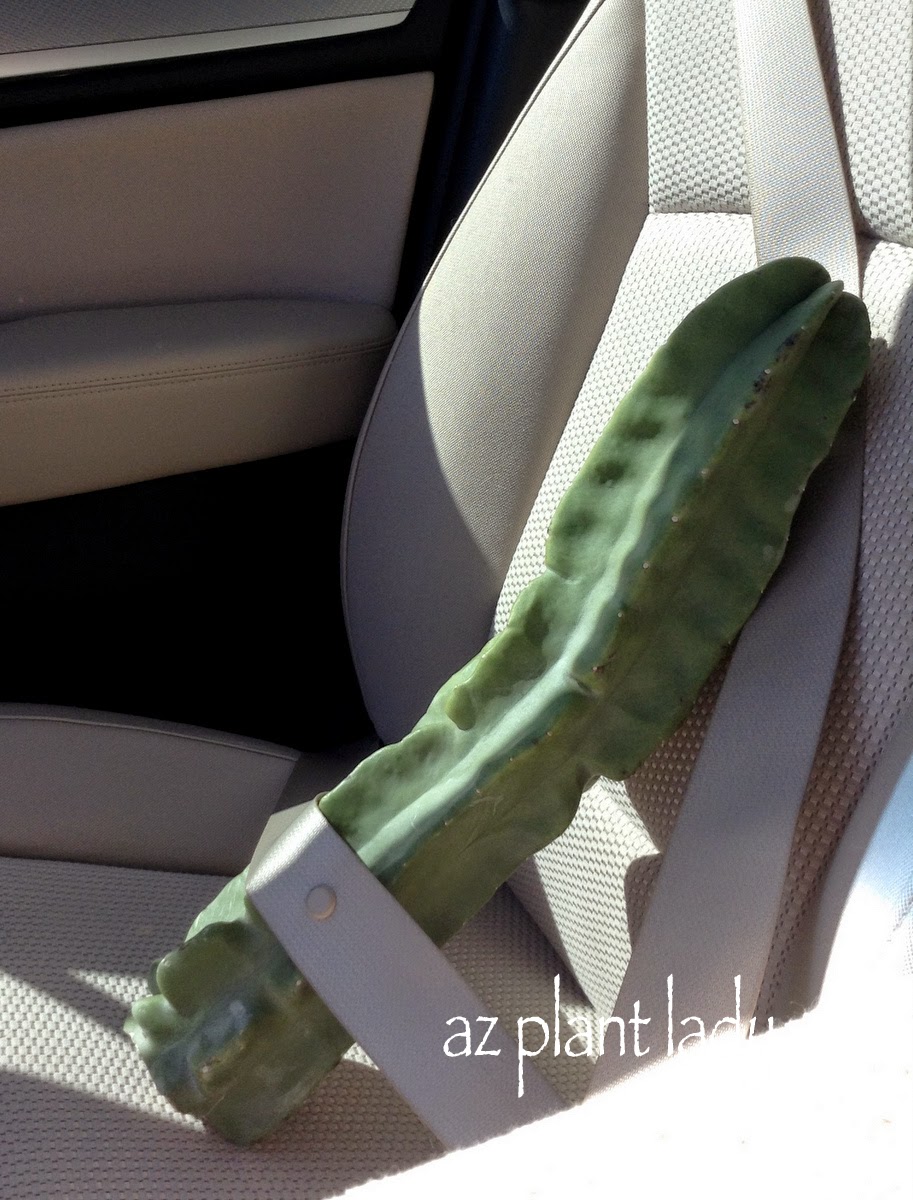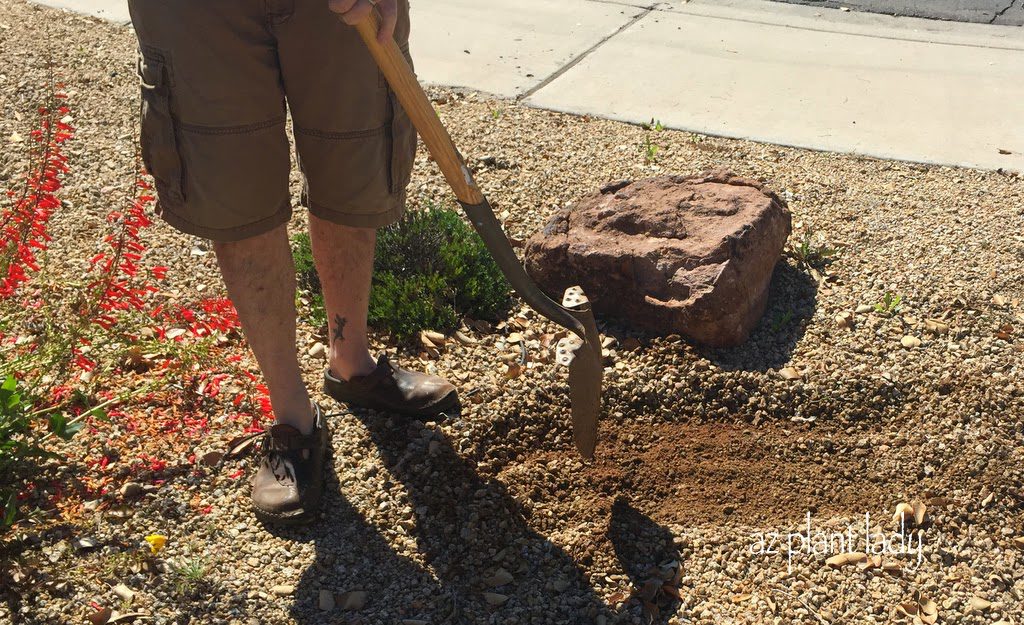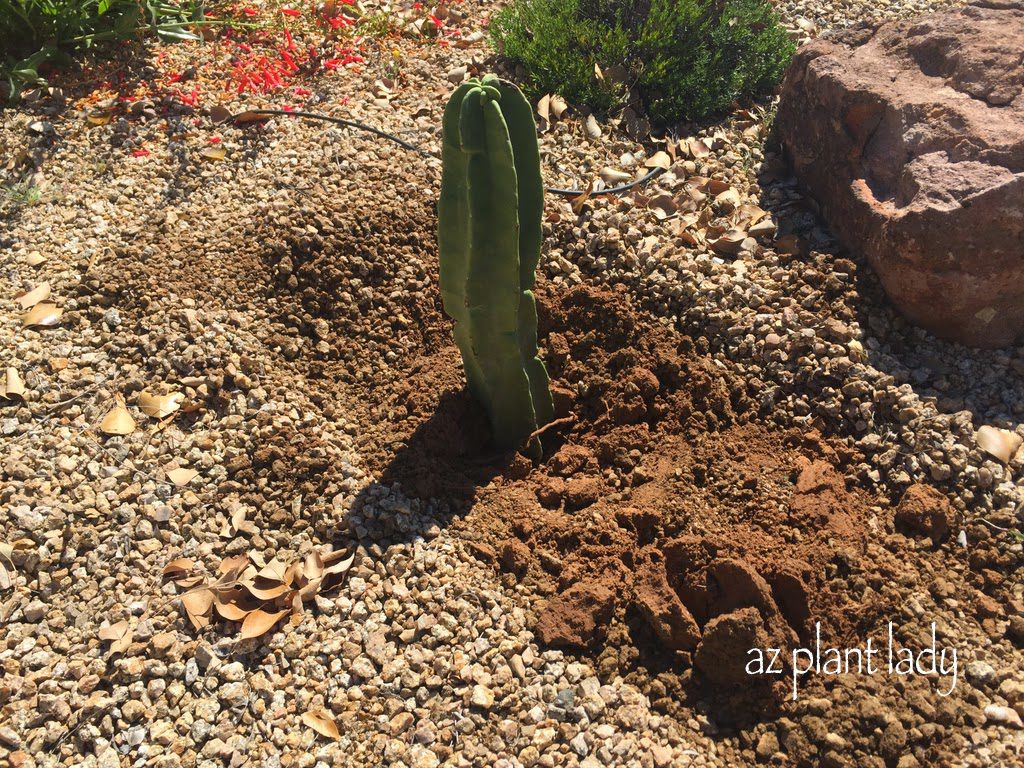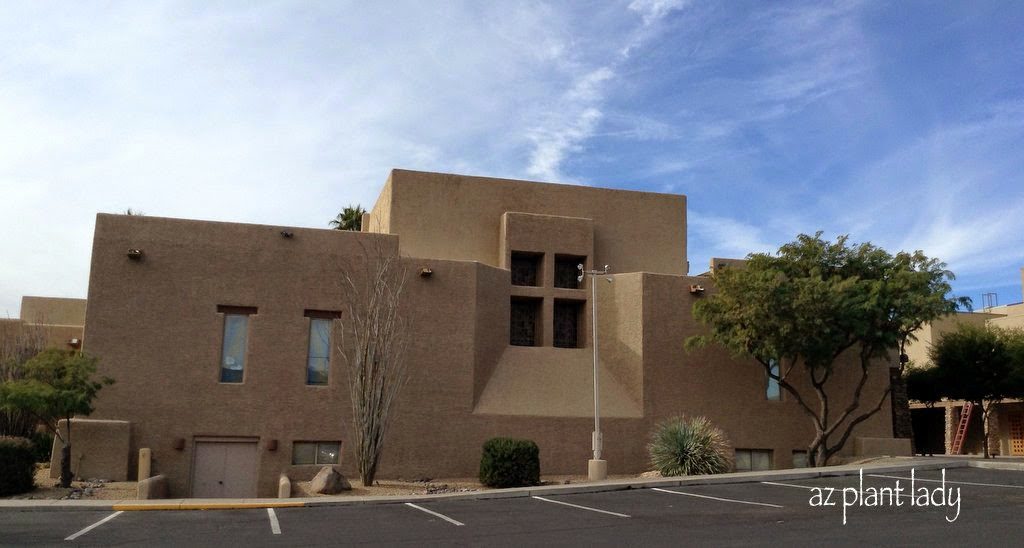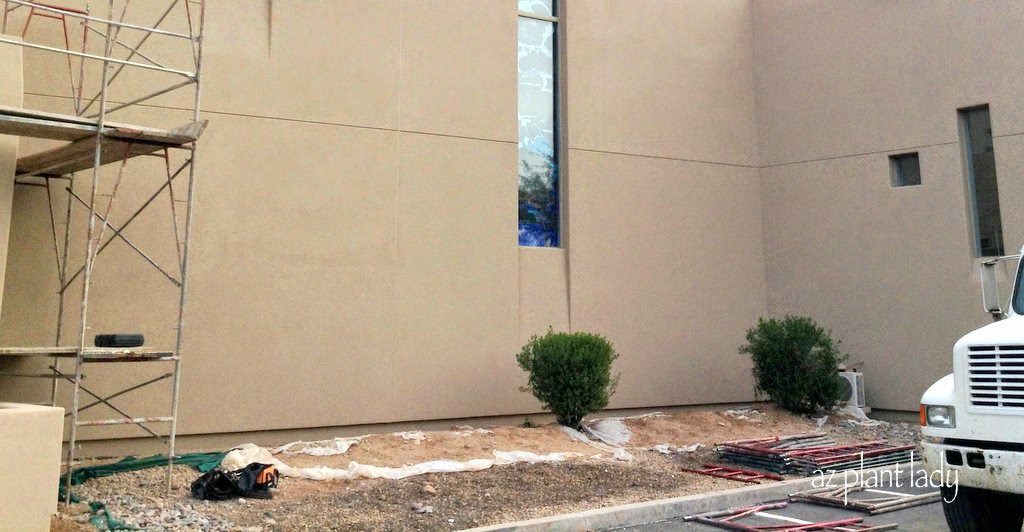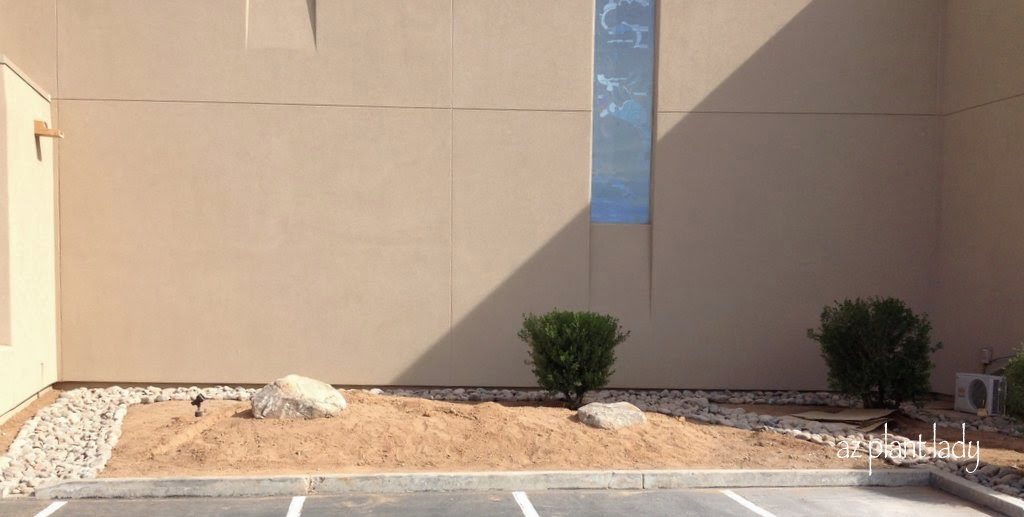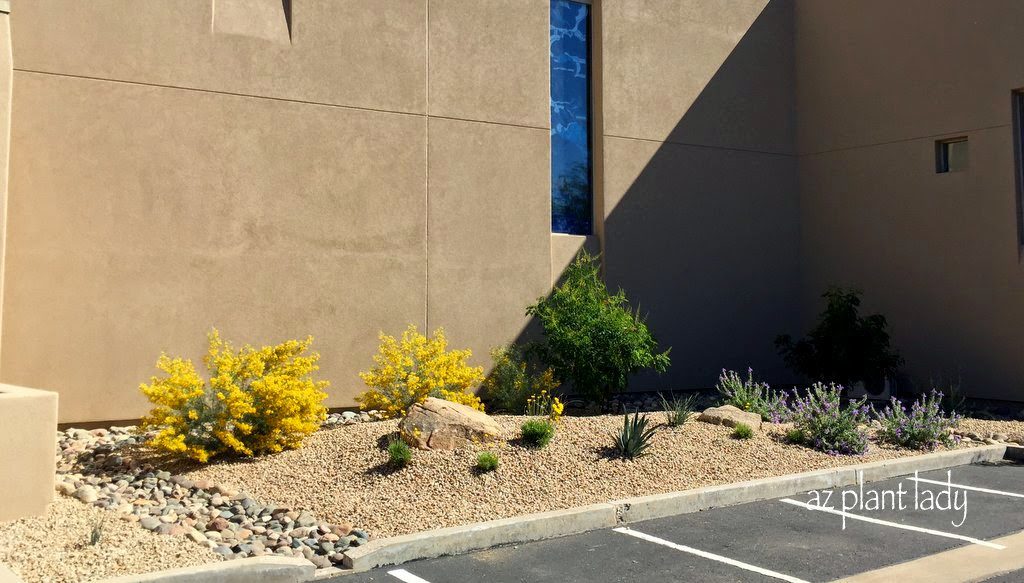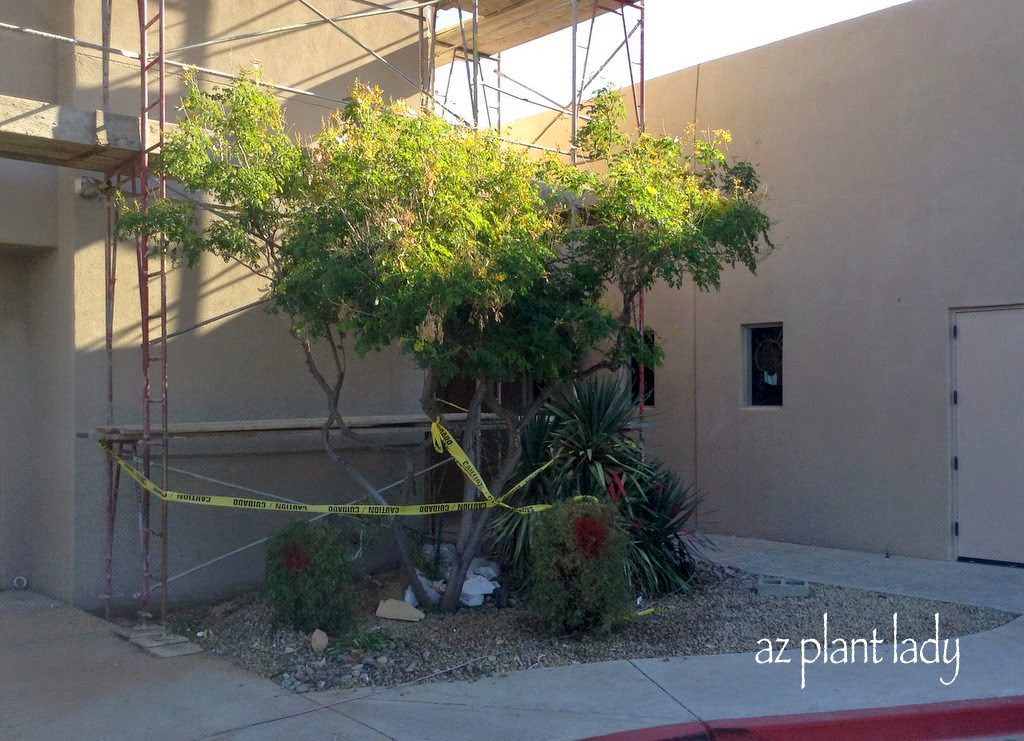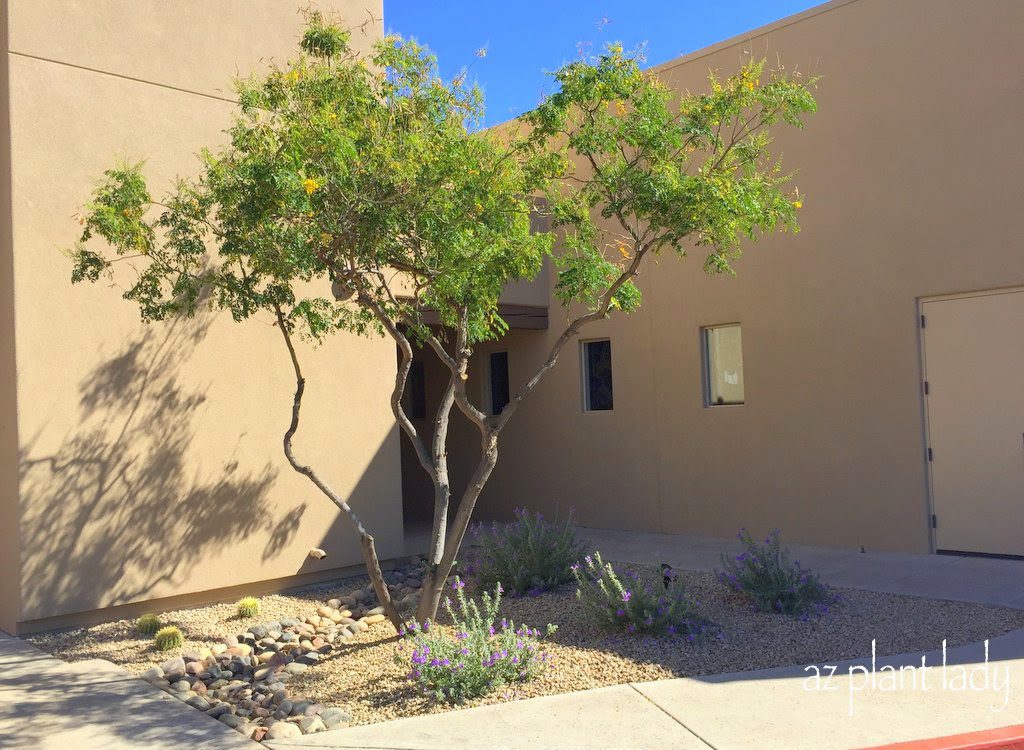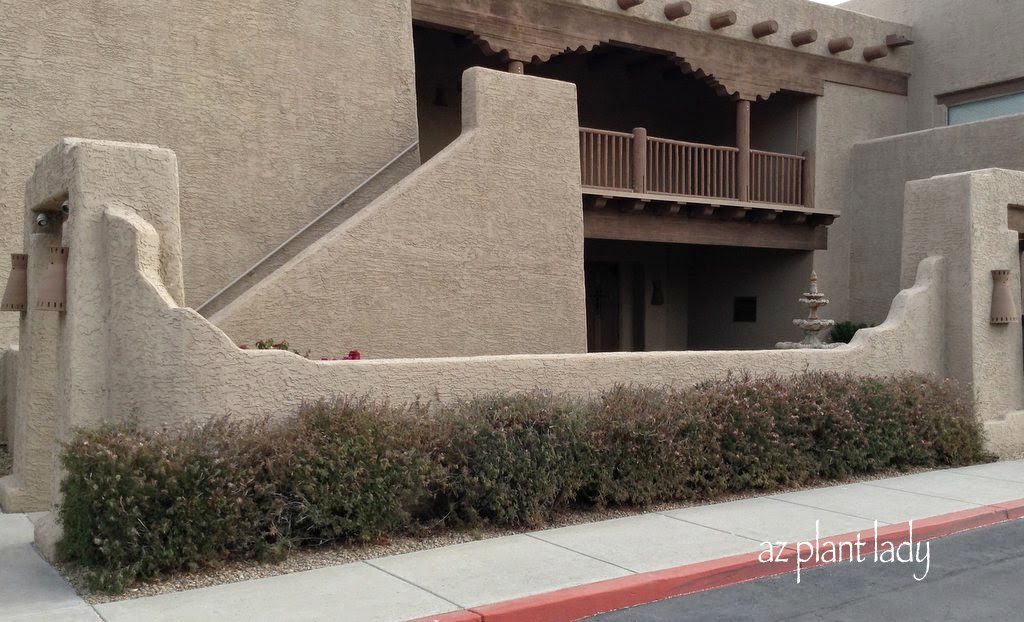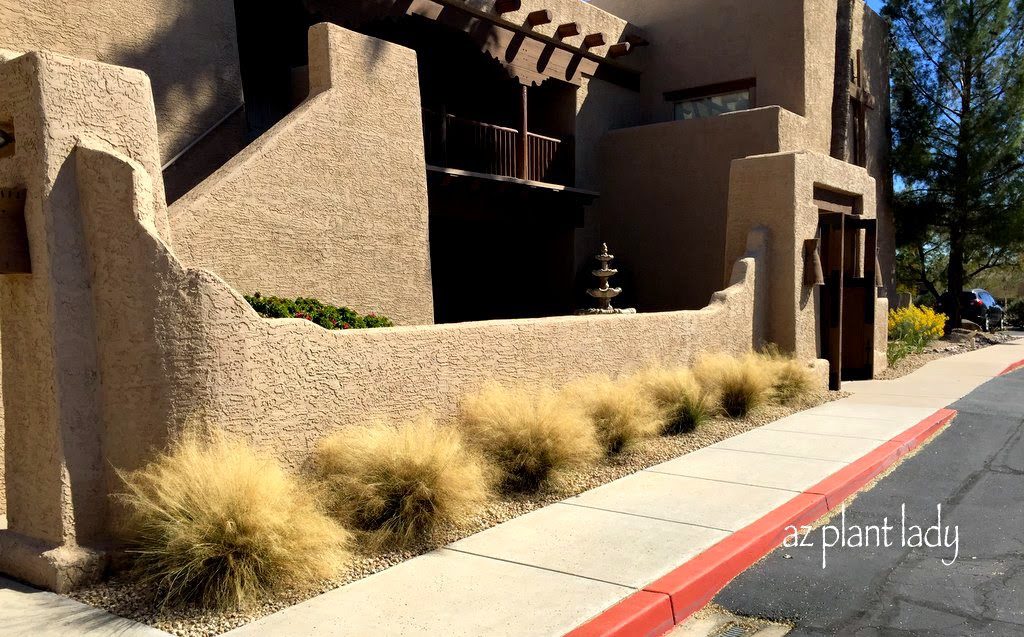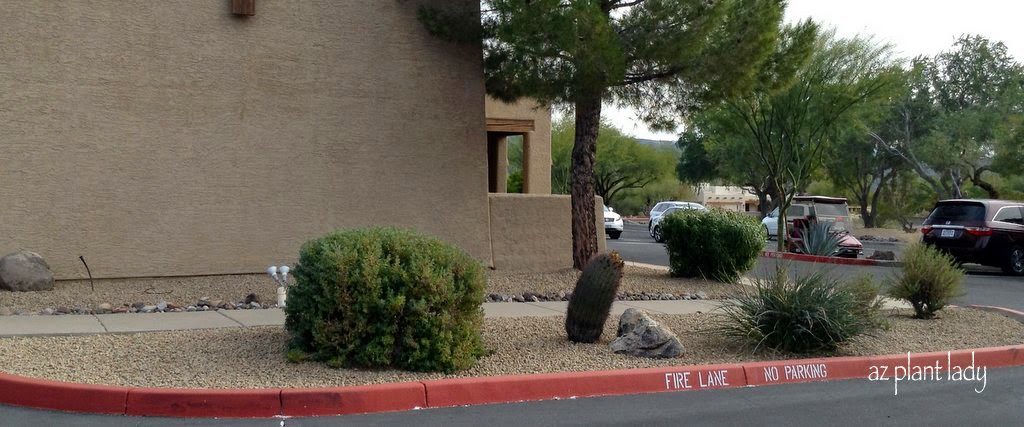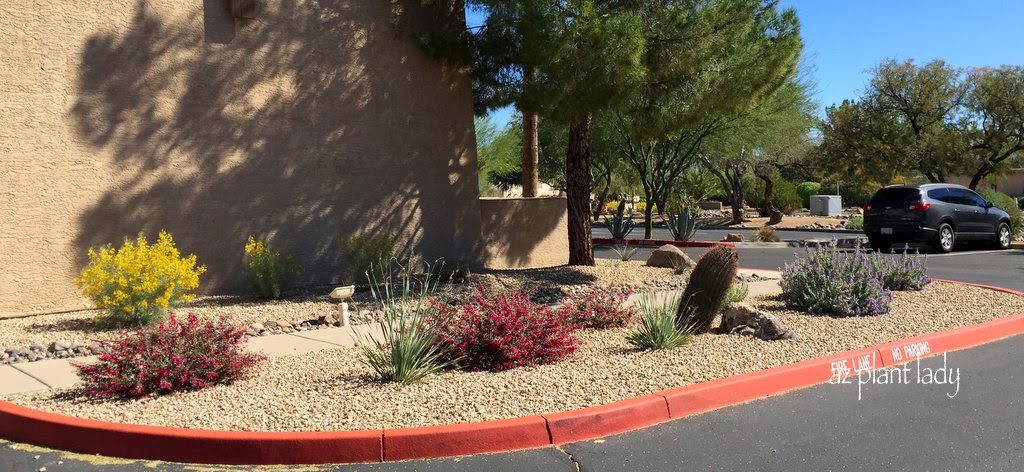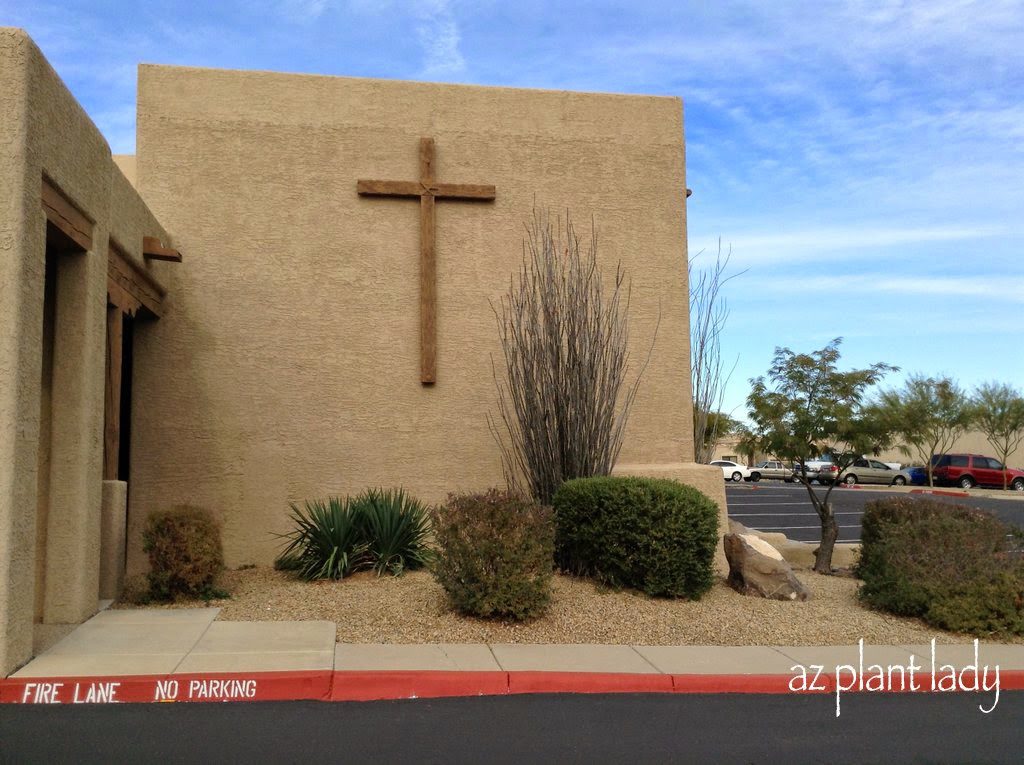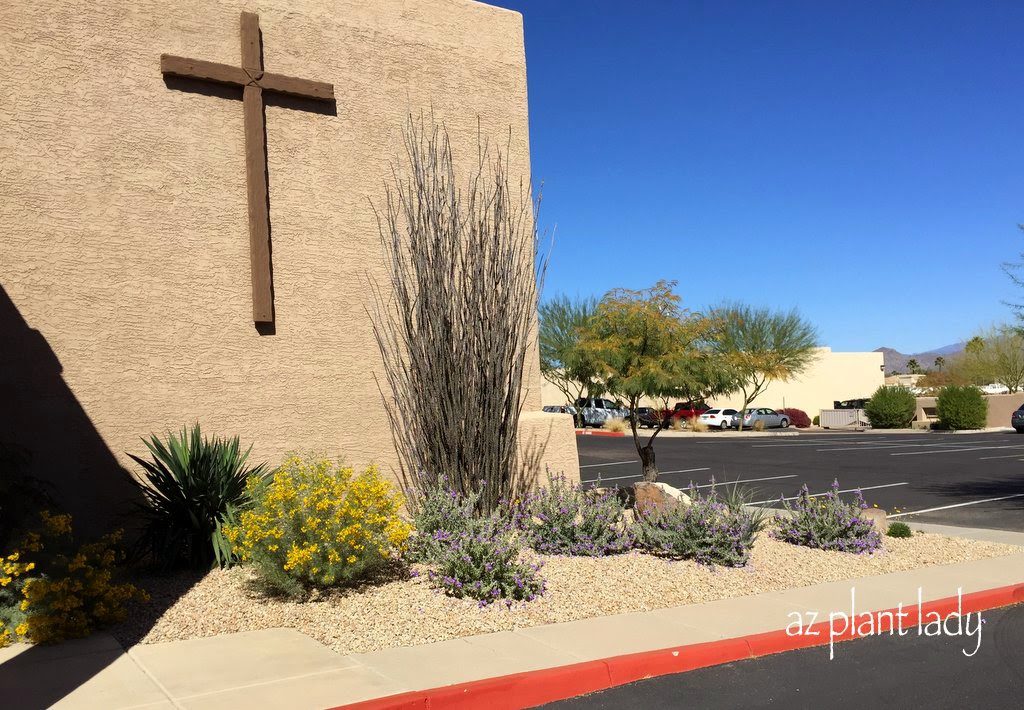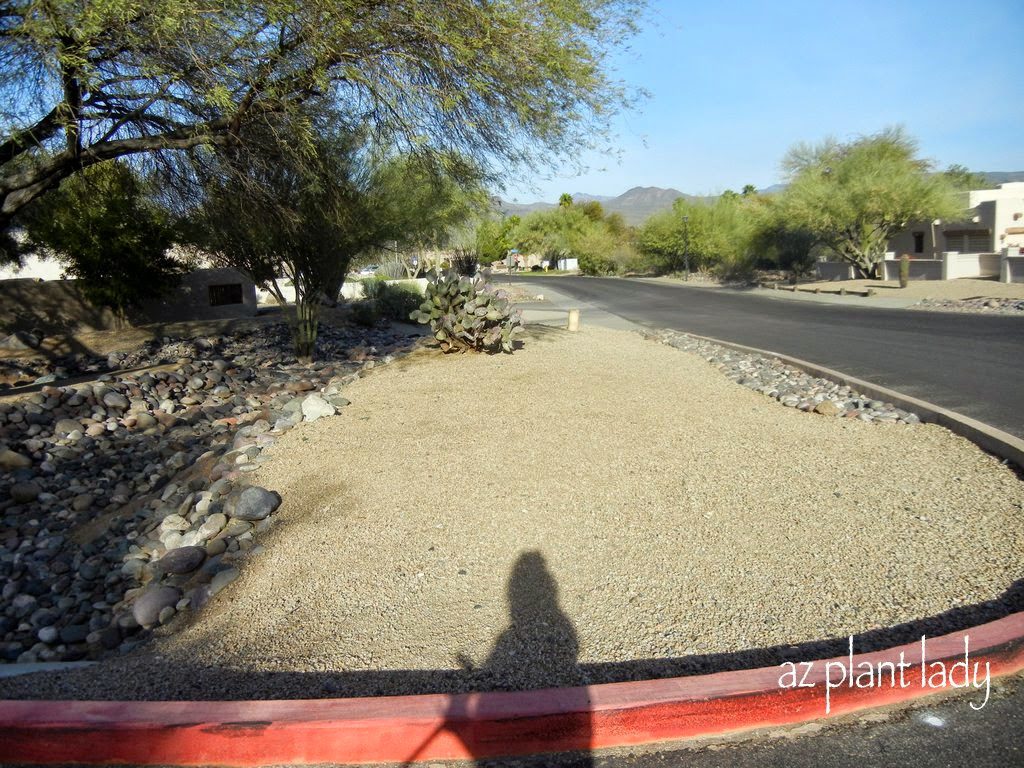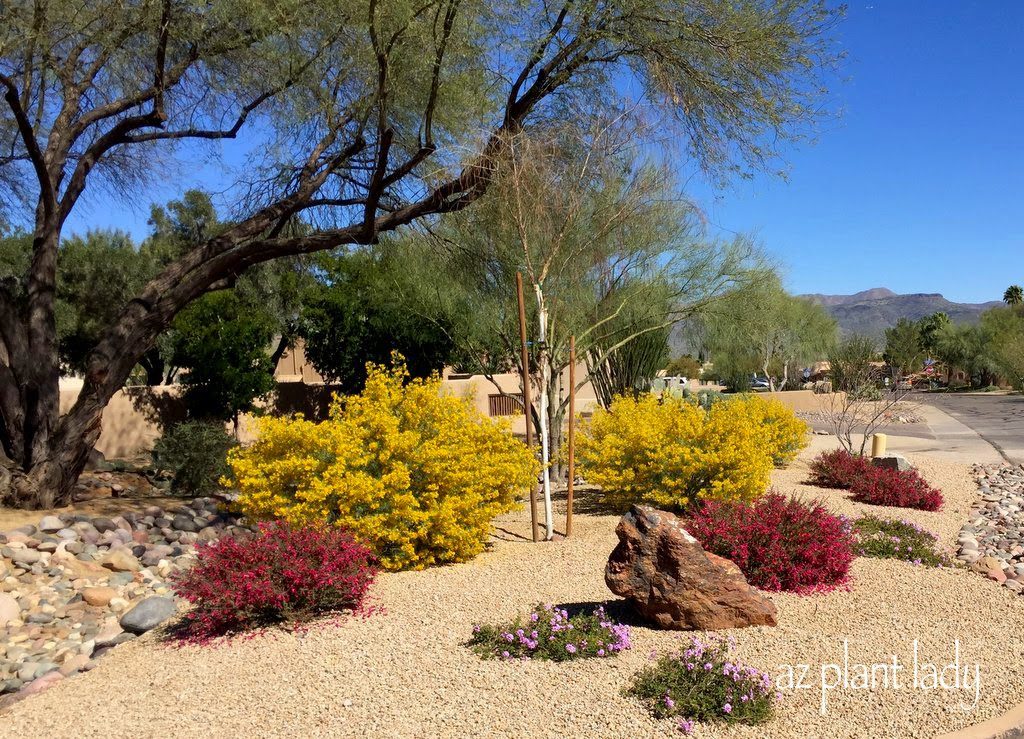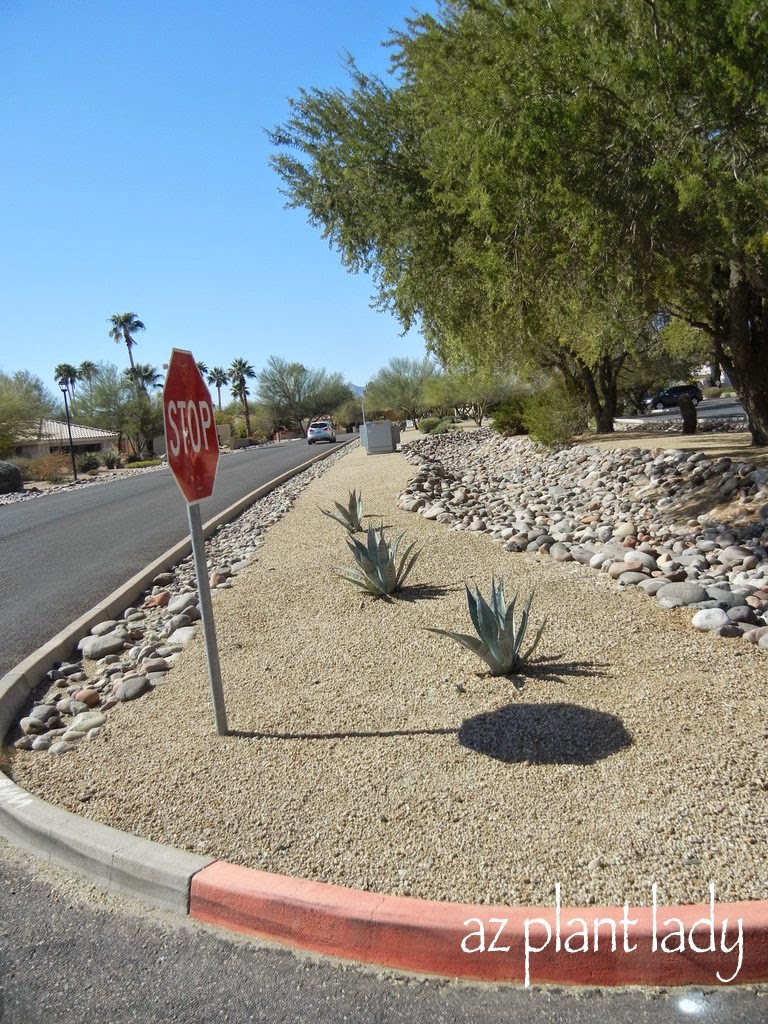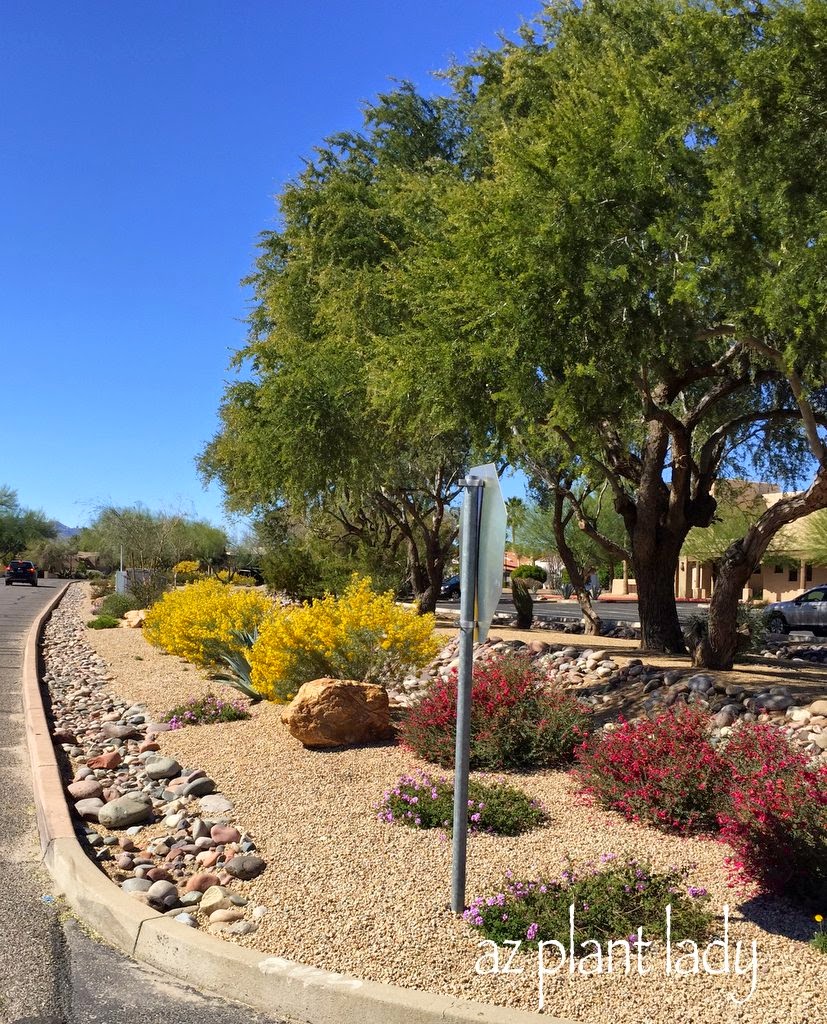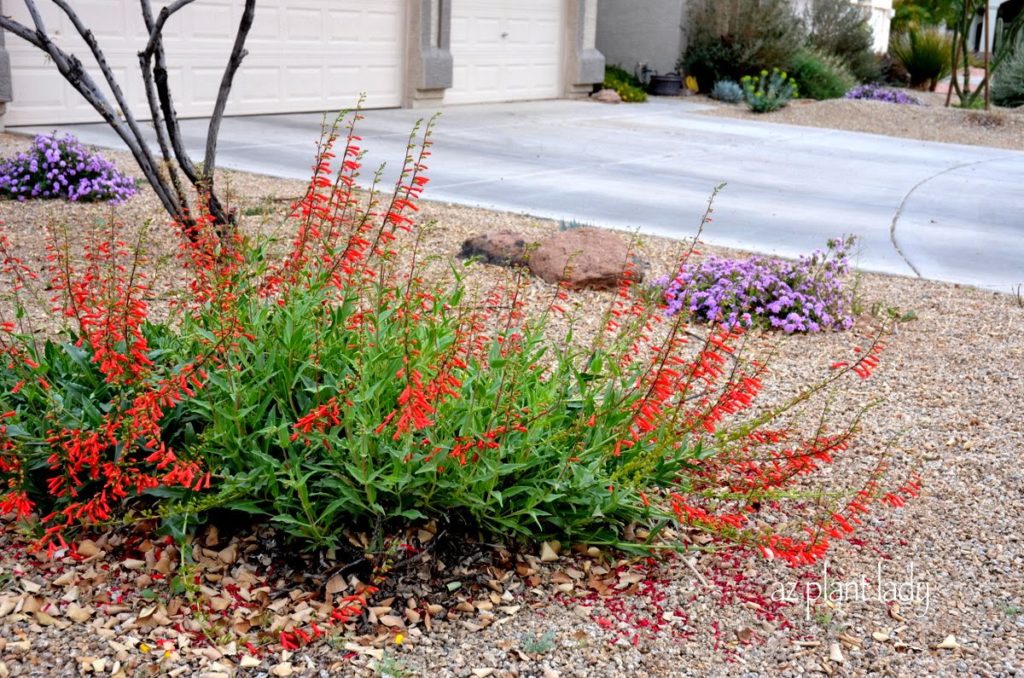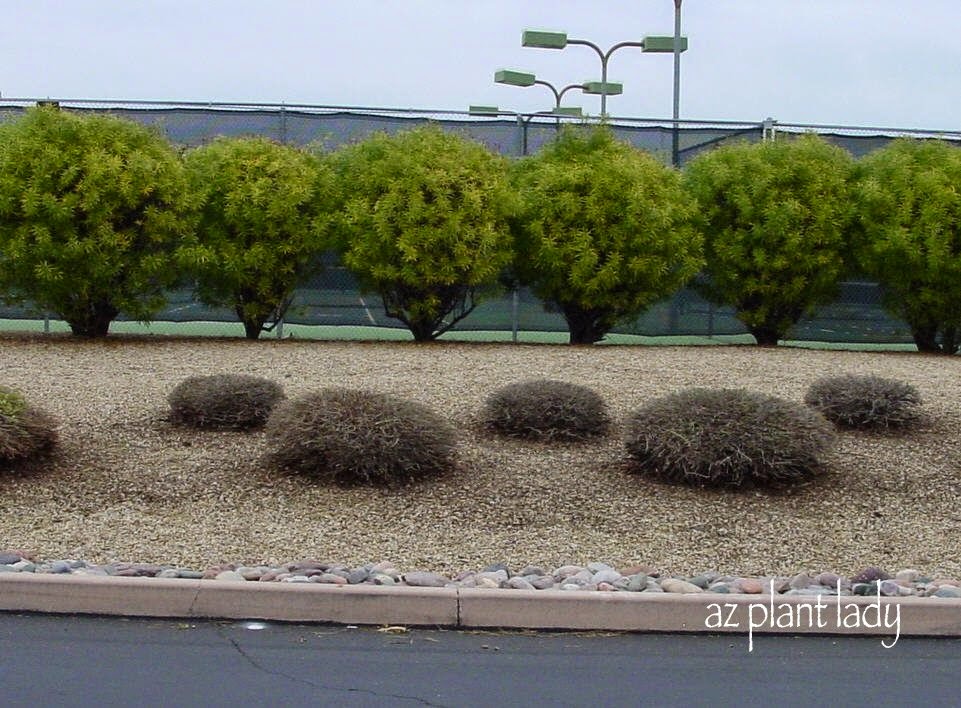Does the idea of attracting hummingbirds to your outdoor space appeal to you?
It’s hard to find anyone who wouldn’t welcome these colorful visitors.
The best way to attract hummingbirds is to have a garden filled with their favorite nectar plants, but what if you don’t have a garden space or any room for additional plants?
What can you do to attract hummingbirds besides hanging out a hummingbird feeder?
Create your own hummingbird container garden!
Imagine a pot filled with one or more plants that are irresistible to hummingbirds. A container takes up little room and enables you to attract hummingbirds to your garden whether your outdoor space is an acre or a small apartment balcony.
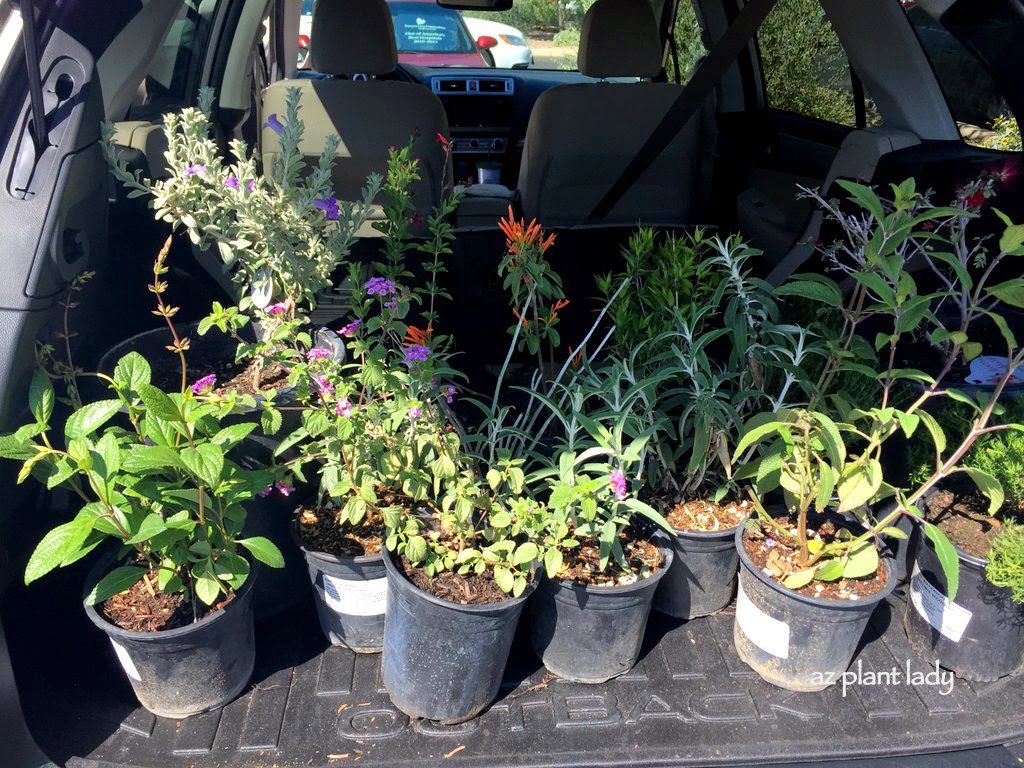
Hummingbirds always seem to be flitting around my garden and they love to perch up high in my cascalote tree.
I recently set out to create three different hummingbird container gardens in my backyard.
The reason that I decided to do this was that I was asked by the Hummingbird Society to be a speaker at the Sedona Hummingbird Festival this summer. The topic of my presentation will be teaching people how to create their own hummingbird container garden. So, I thought that it would be a fun project to create my own.
Many people rely solely on hummingbird feeders to attract hummers because they don’t have enough garden space. My hope is that I can show them that they can have a mini-hummingbird garden despite their limited space.
I must admit, that I love it when I have to buy plants for a project. So, I headed out to the Desert Botanical Garden’s spring plant sale.
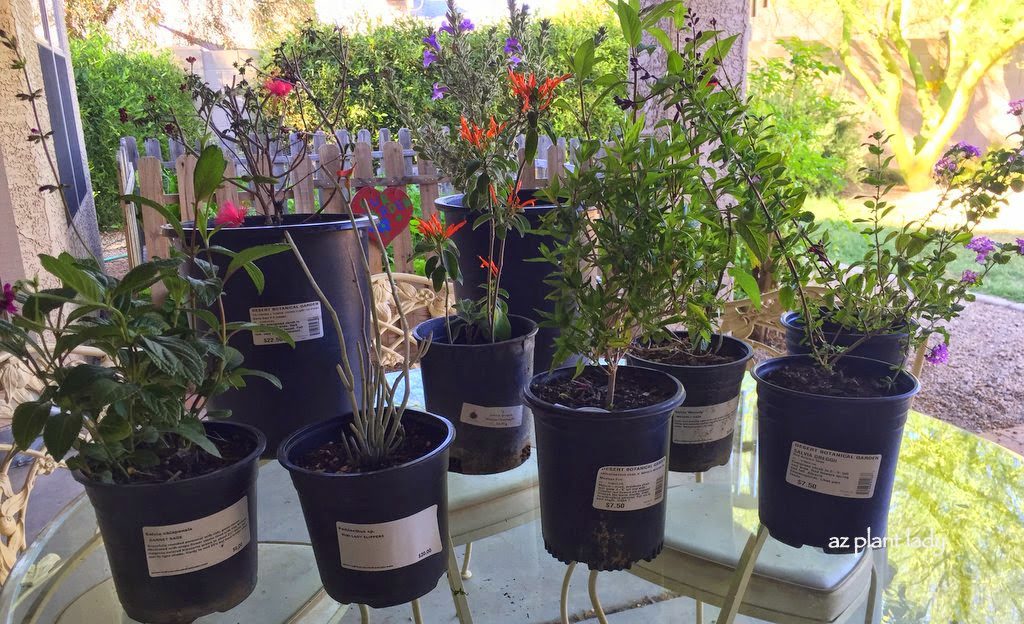
I had a wish list of nine plants that I wanted to use and I was thrilled to find them all.
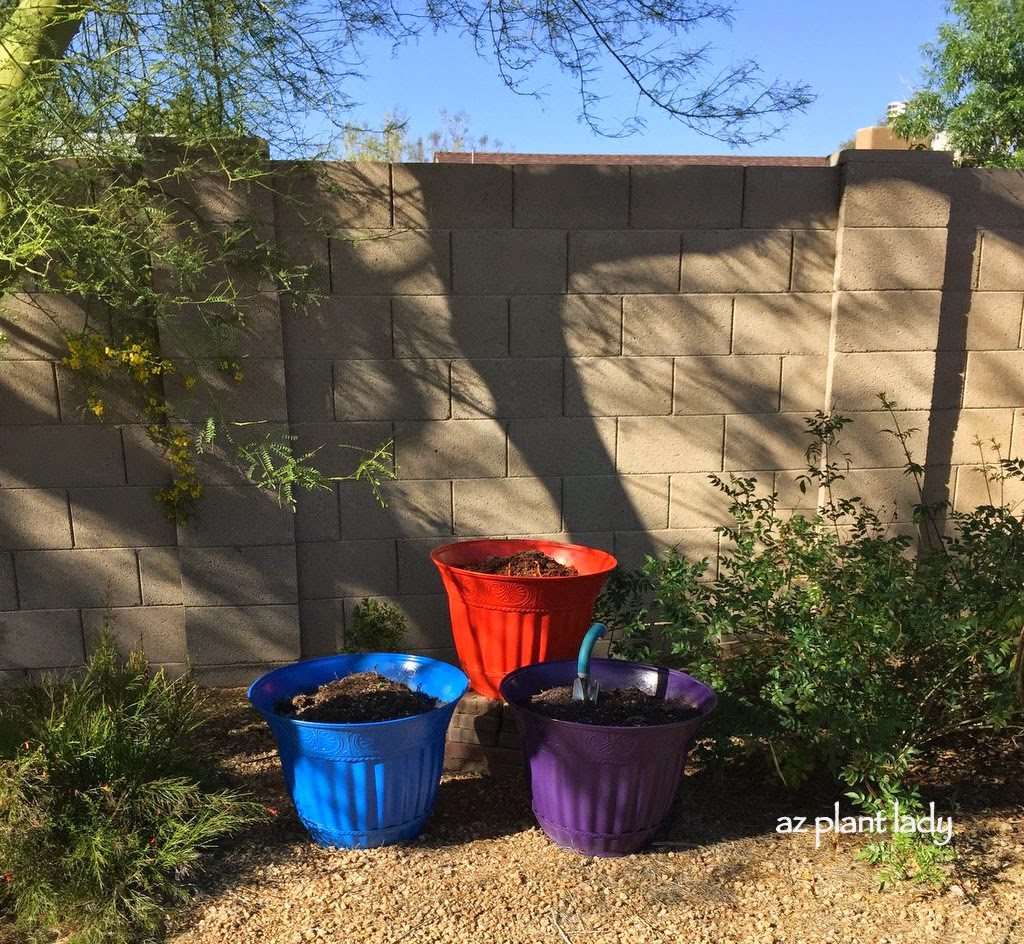
The pots that I decided to use were repurposed. They used to be located next to my vegetable garden where I would plant a mixture of herbs, vegetables and flowers in them.
The problem was that my 7-month-old puppy, Polly, kept eating the edible plants out of them. So I decided to use them for non-edible plants in hopes that she would leave them alone.
I had bought the pots 3 years ago – they were on sale at Walmart for $5 each. I had painted them using spray paint that was suitable for use on plastic.
For my portable hummingbird garden, I moved the pots to an area that receives filtered shade underneath my ‘Desert Museum’ palo verde tree. I also gave them a new coat of paint to freshen up the colors.
To add height and definition, I raised the orange pot by placing it on some leftover step stones.
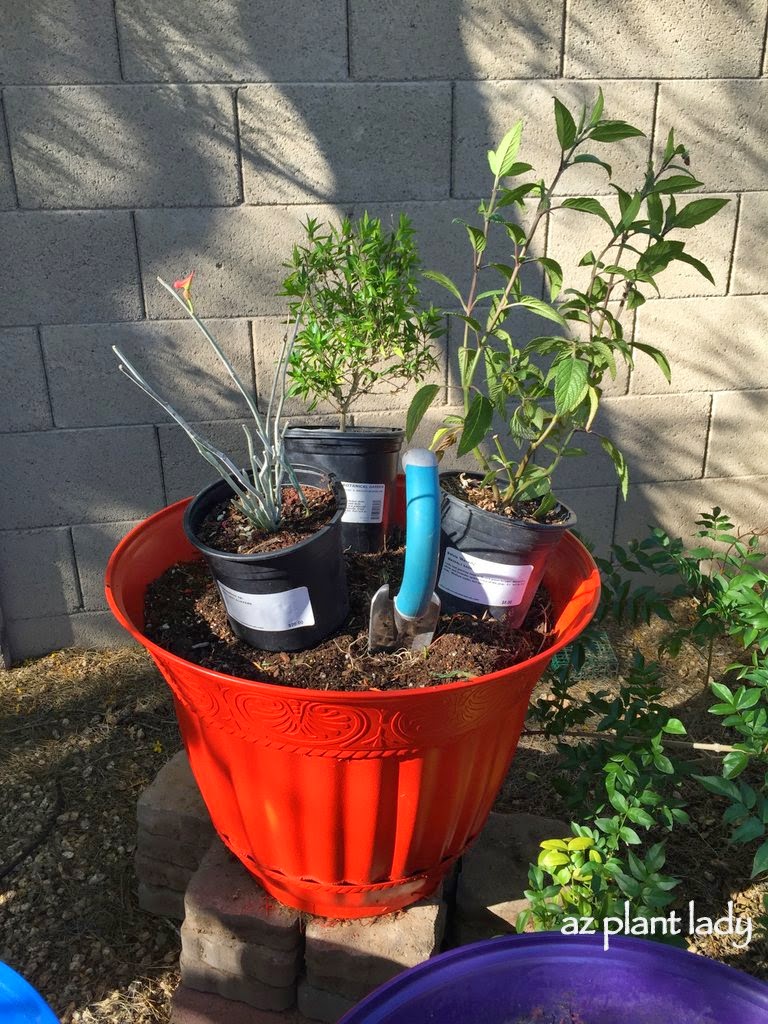
Each container was to have 3 different plants. I had some fun deciding on the combinations for each pot.
For the orange container, I decided to plant a succulent mini lady’s slipper(Pedilanthus macrocarpus), Mexican fire (Anisacanthus quadrifidus var. wrightii) and Waverly sage(Salvia ‘Waverly’).
I confess that I have never grown any of these plants in this container before, which makes this project even more fun.
While I have grown the regular-sized lady’s slipper, I didn’t know there was a mini variety until I saw it at the sale and I knew that I just had to have it – it would be a perfect size for a container. (One thing that I love about the Desert Botanical Garden’s plant sales is that you can often find unusual or rare types of plants).
Mexican fire will bloom spring through fall, producing red flowers. I don’t have any experience growing this shrub at all, so this project will be a learning experience.
The salvia, ‘Waverley’ sage, has white and lavender flowers, which are beautiful. Like most salvias, it will do best in filtered shade in the desert.
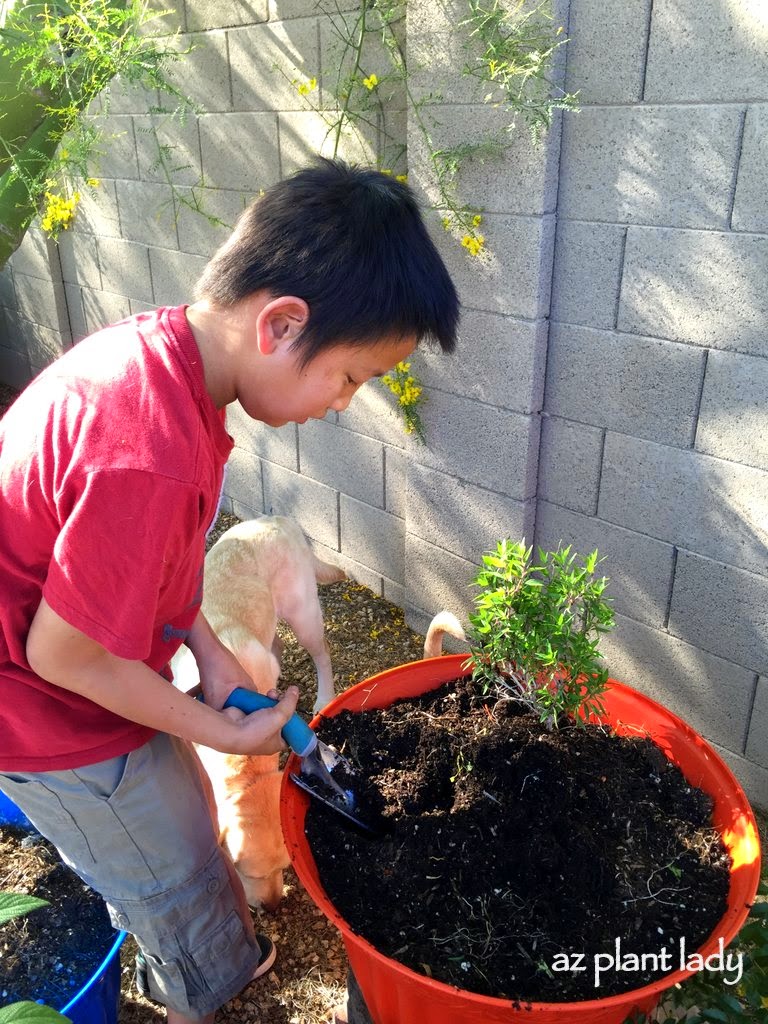
Polly is checking out what we were doing.
My son, Kai, was excited to help out with the project. He decided that the orange pot would be his so he wanted to add the plants himself.
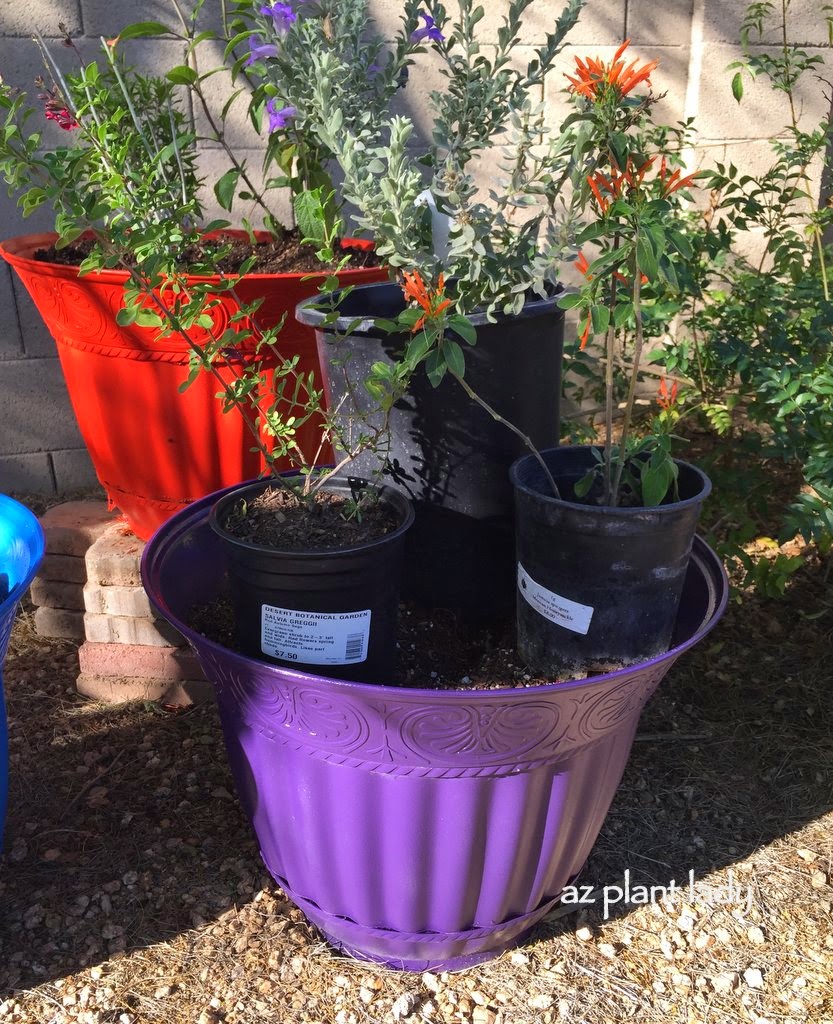
Next up was my purple pot. In it went Blue Bells(Eremophila hygrophana), Mexican honeysuckle(Justicia spicigera) and red autumn sage(Salvia greggii).
Blue Bells is a relatively new plant on the scene and this Australian native flowers all year long and has evergreen foliage. I have used it a lot in recent designs but this is the first one in my own garden.
Autumn sage has always been a favorite of mine – especially in areas with filtered shade where their red flowers will decorate the landscape fall through spring.
Mexican honeysuckle had been my go-to choice for shady areas where its bright green leaves and orange flowers look great all year. After 17 years as a horticulturist, there is finally one in my landscape.
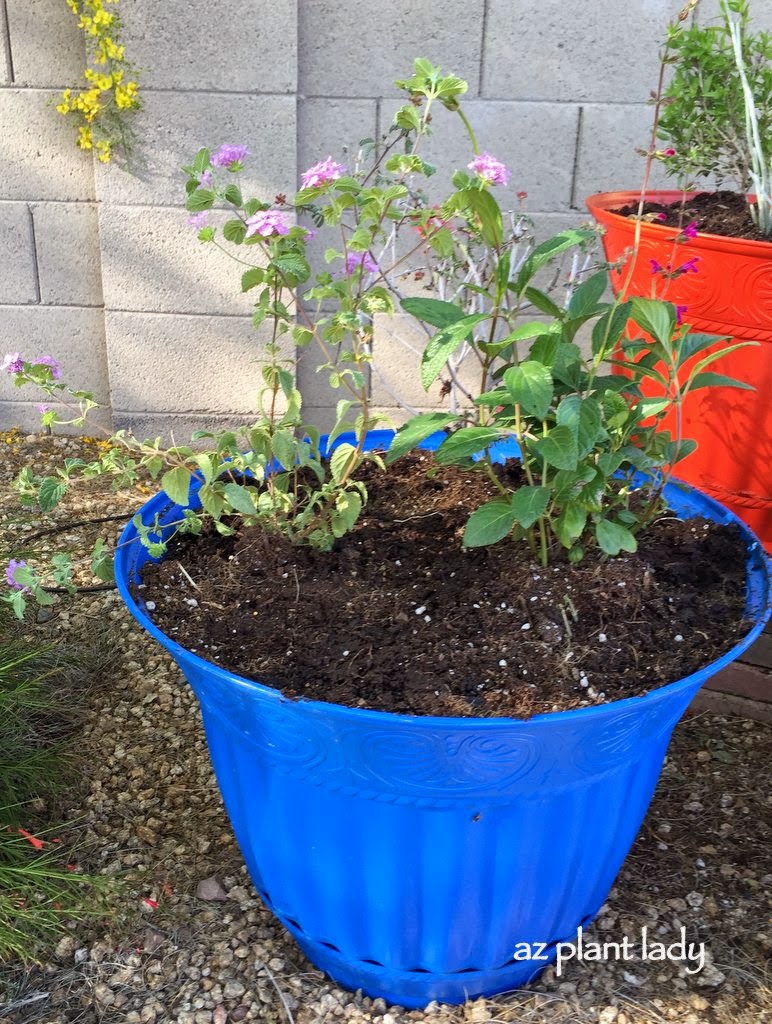
The blue pot contains a newer plant variety, an unknown and an old favorite.
Sierra Star(Calliandra ‘Sierra Star’), garnet sage(Salvia chiapensis) and purple trailing lantana(Lantana montevidensis) made up the last trio.
Sierra Star is a hybrid with two famous parents – pink fairy duster(Calliandra eriophylla) and Baja fairy duster(Calliandra californica). It blooms throughout the year, producing reddish-pink flowers. I have used in several new designs and am so excited to have it in my garden.
Garnet sage is another salvia that I am looking forward to learning more about. It has lovely magenta flowers and attractive foliage.
Some people may be surprised to learn that purple trailing lantana attracts hummingbirds, but you’ll find it on most hummingbird plant lists and I’ve seen them feed from lantana before.
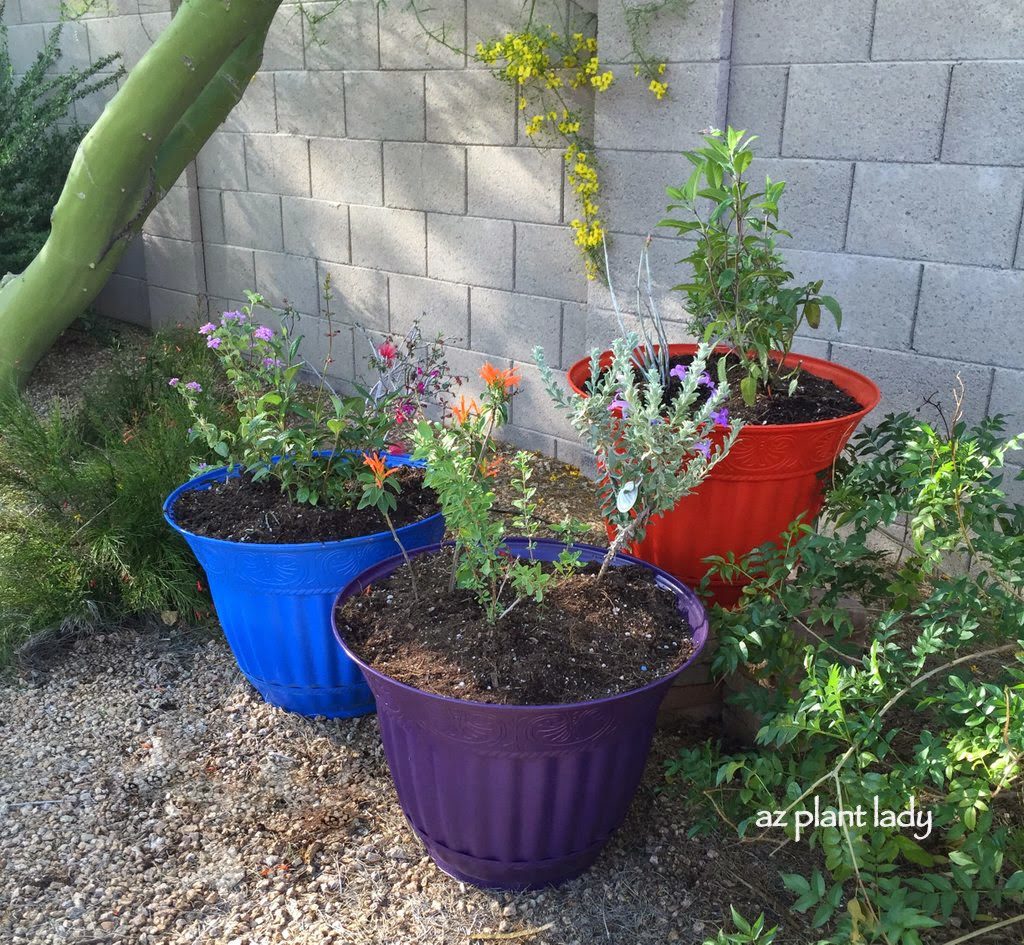
As with all container plantings, I used a high-quality planting mix.
As I stepped back to admire my work,
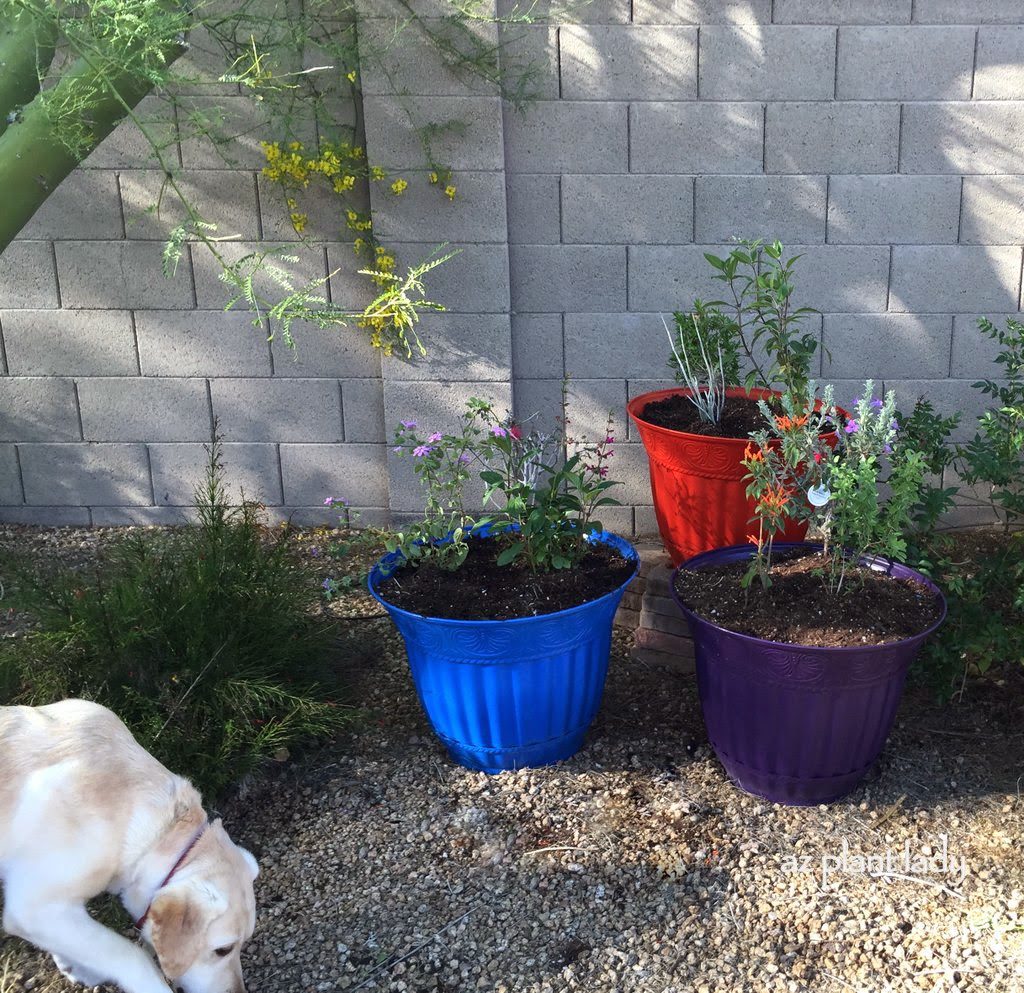
Unfortunately, someone else decided to come and admire my hard work too.
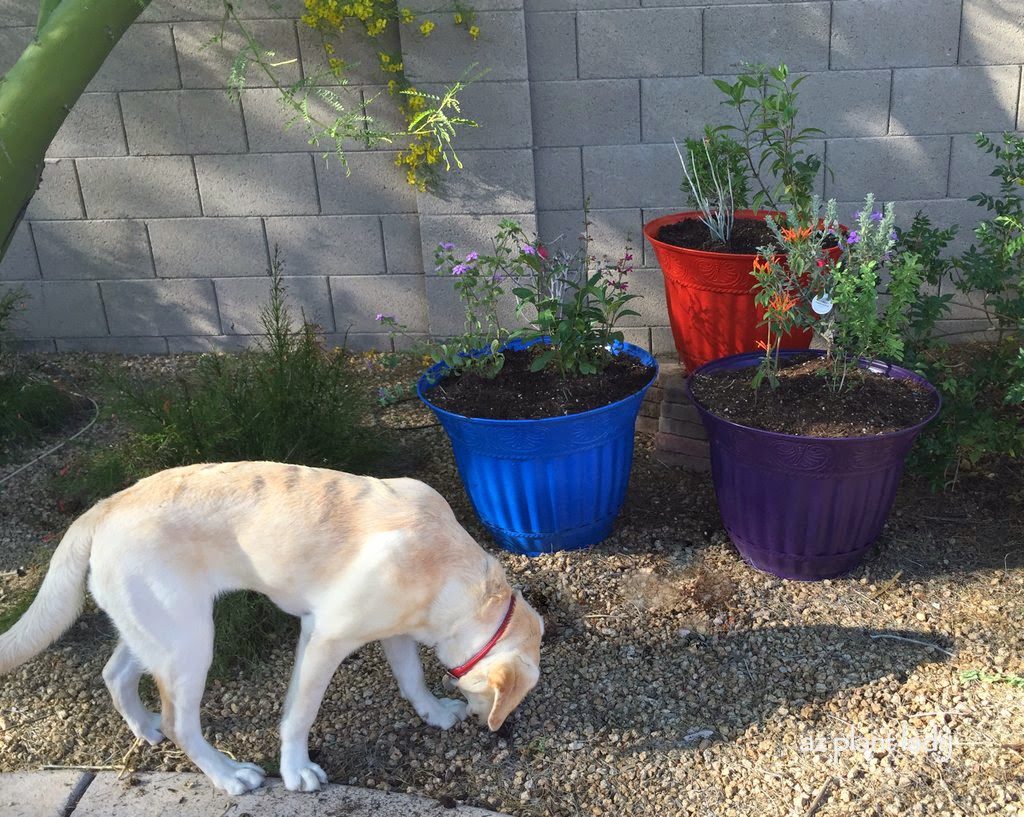
I admit that I haven’t had much trouble with dogs eating my plants until Polly and her sister Penny came along.
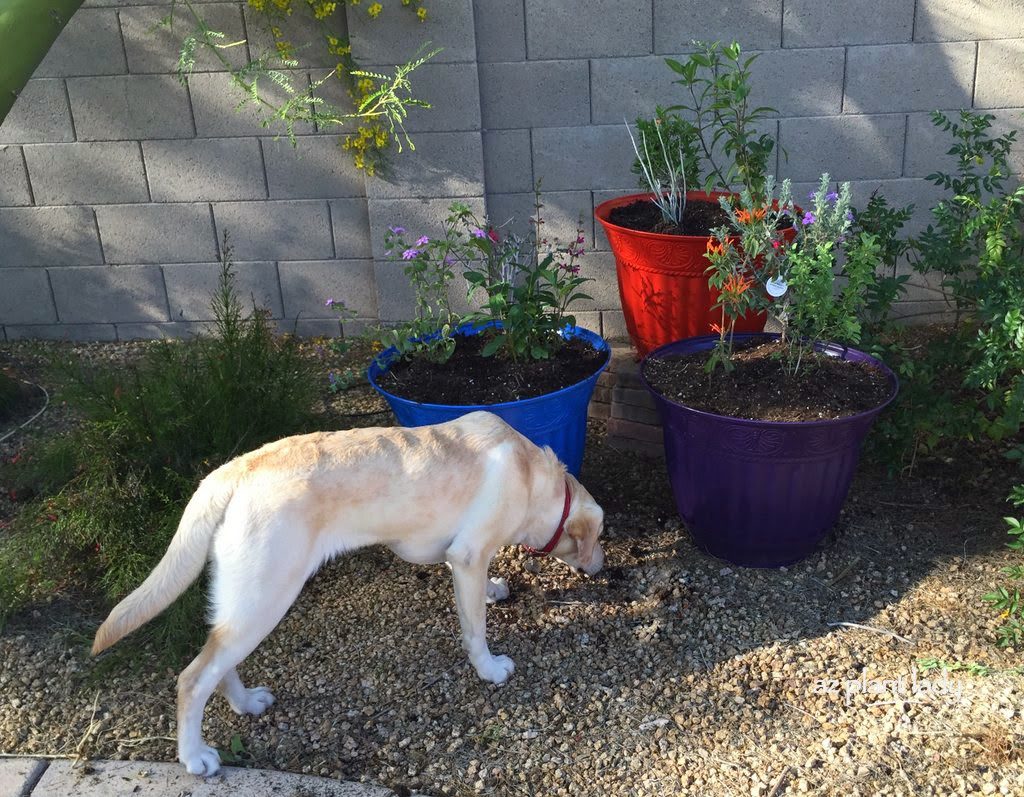
My hope is that after she gets used to them, the newness will wear off and she will learn to ignore them.
Until then, we put up a temporary barrier.
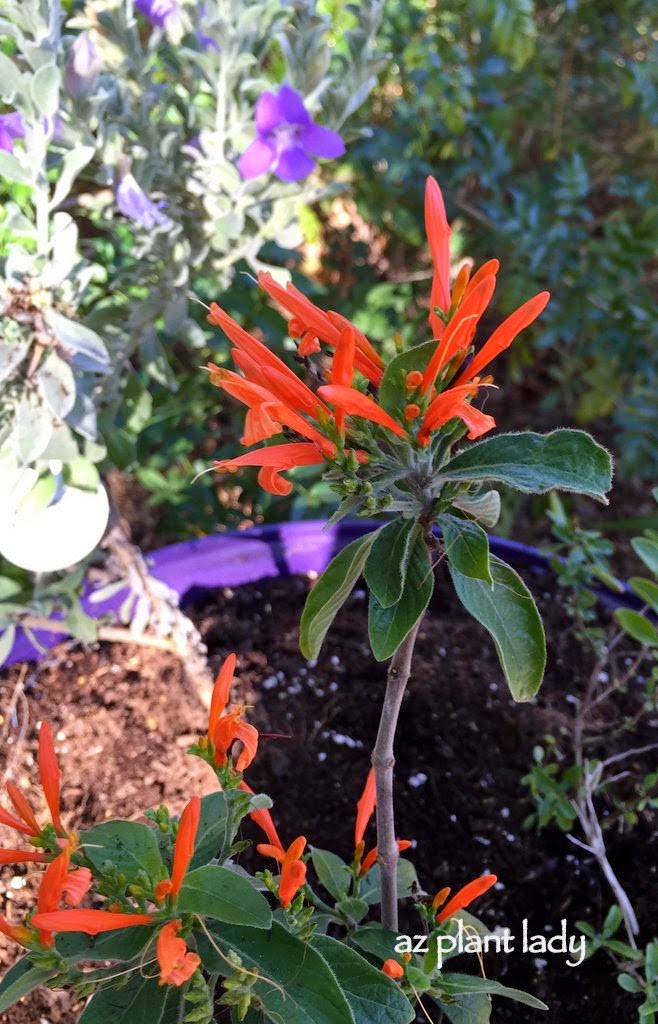
Thankfully, the barrier won’t keep the hummingbirds away. In my experience, it takes a few days for them to notice new plants (and hummingbird feeders).
I’ll keep you updated as to how my hummingbird container does and will take photos along the way that I can use in my upcoming presentation.


